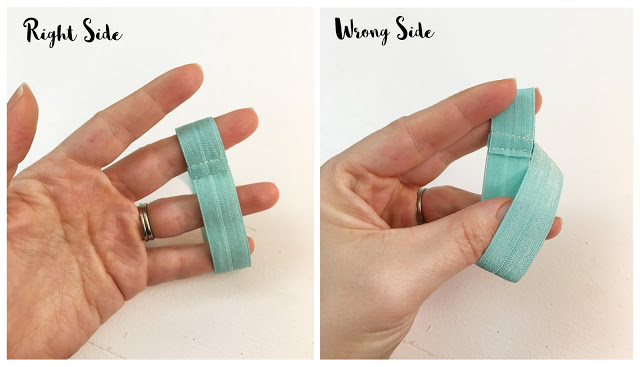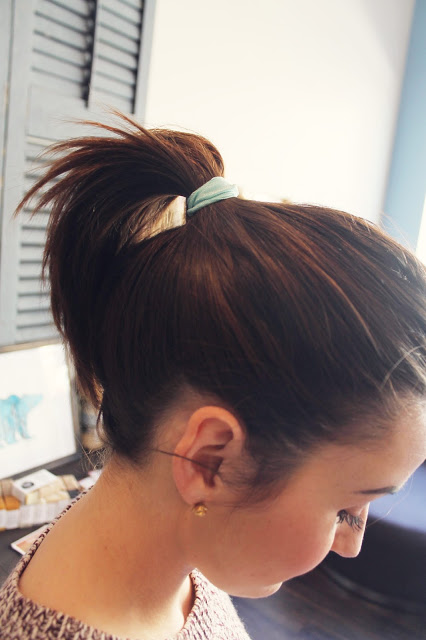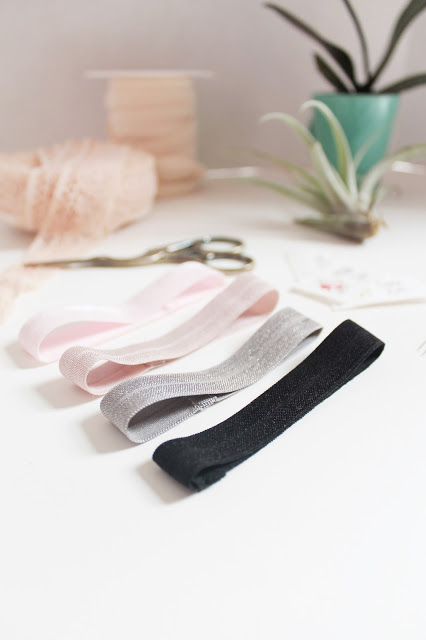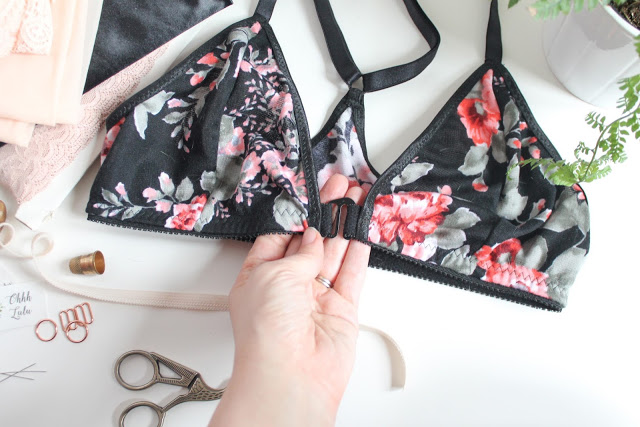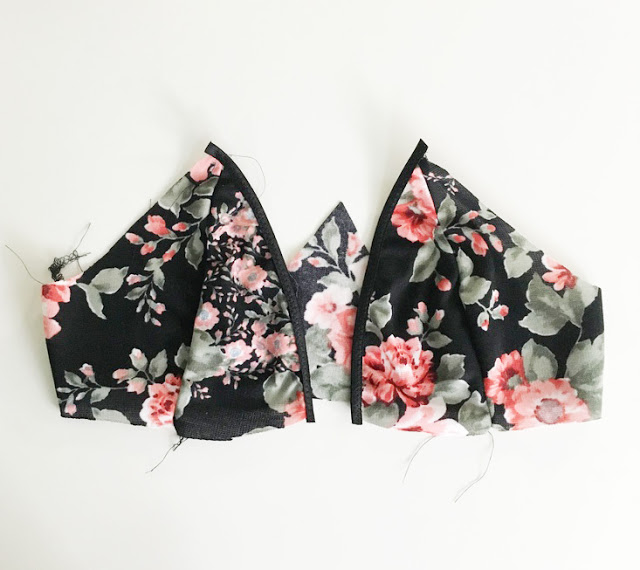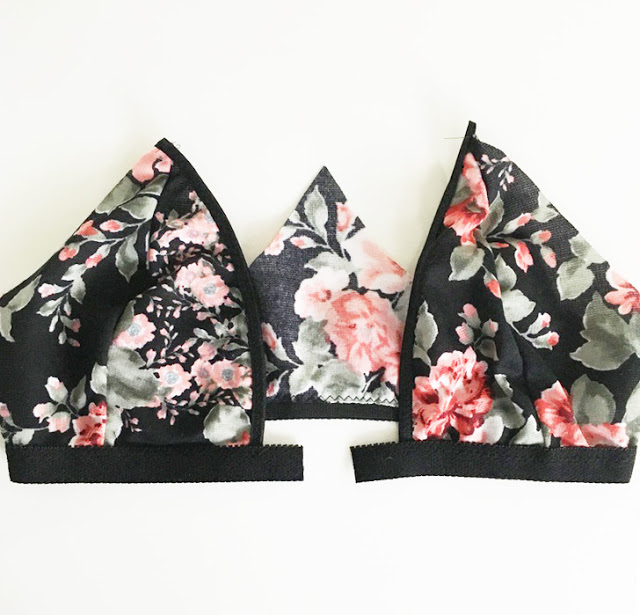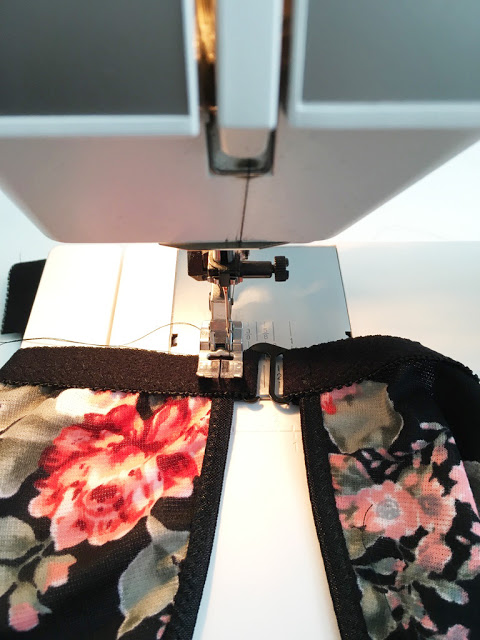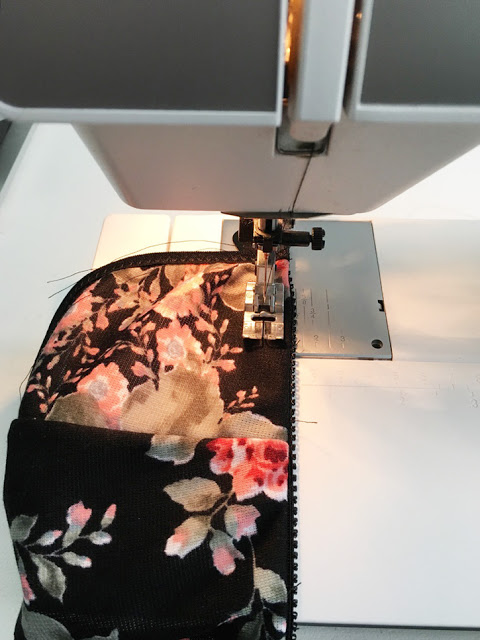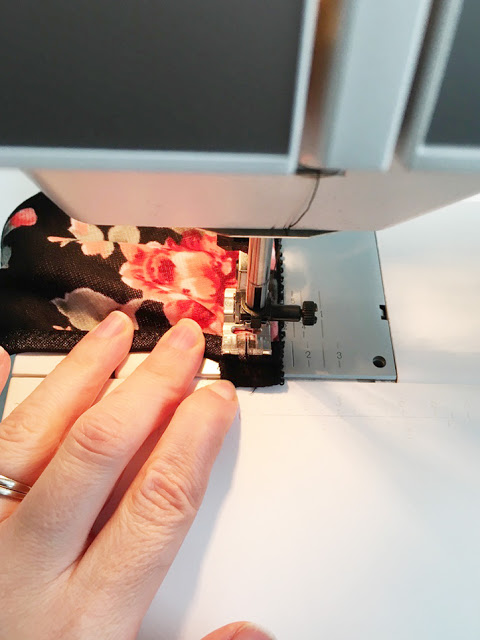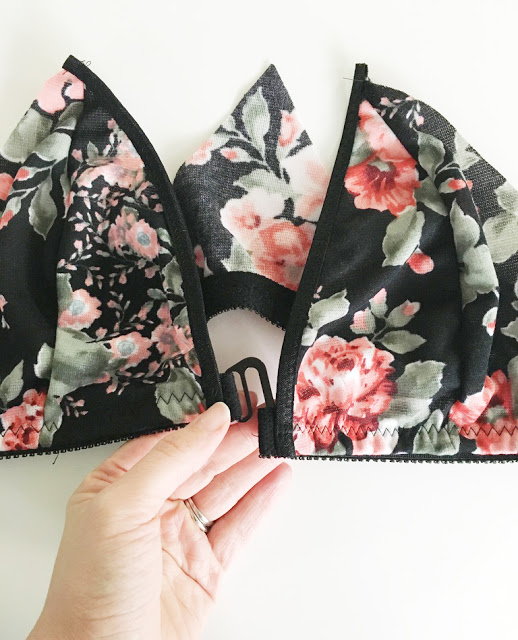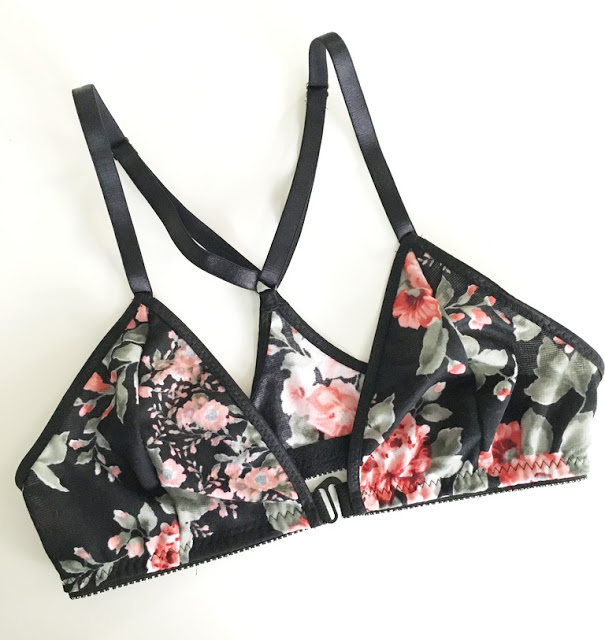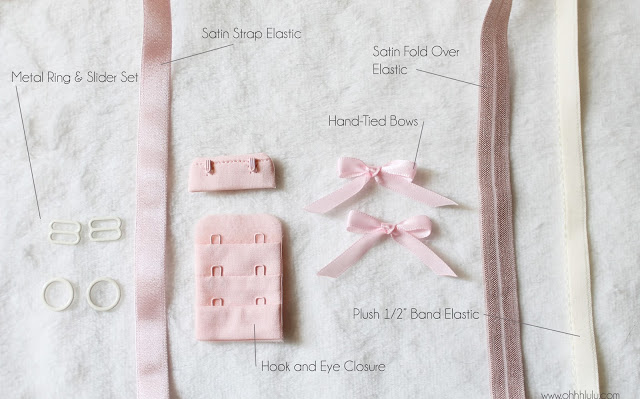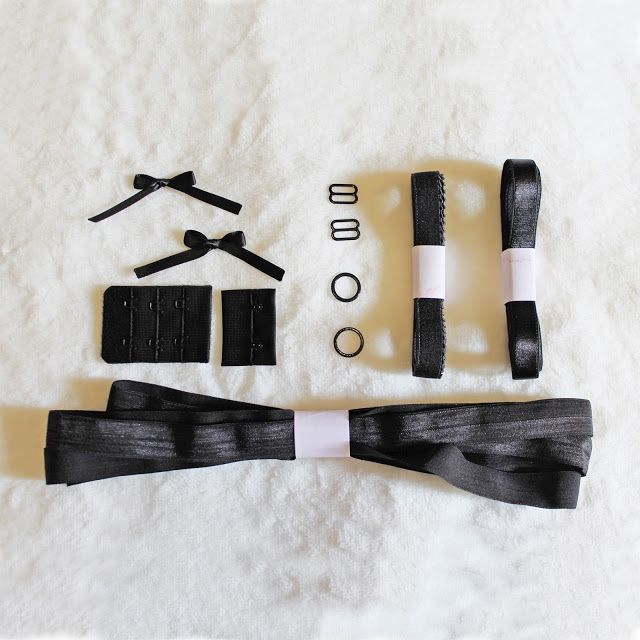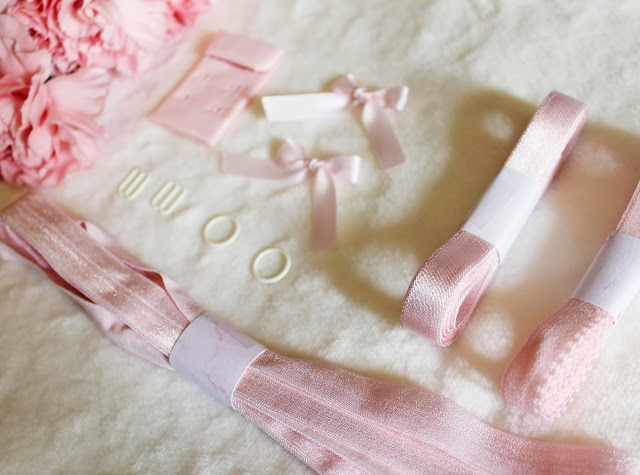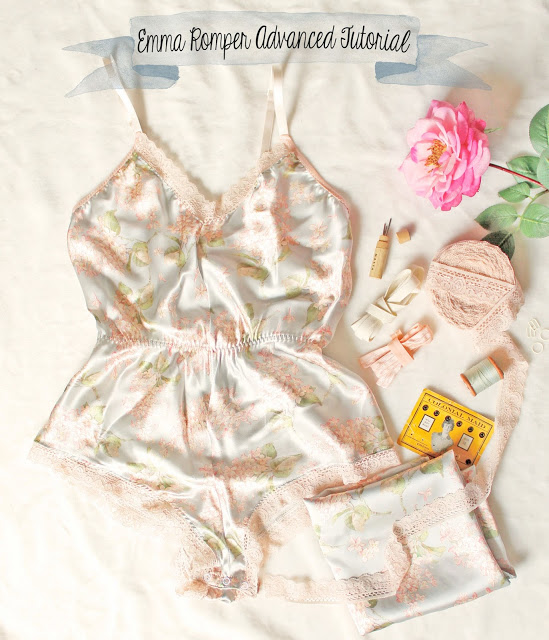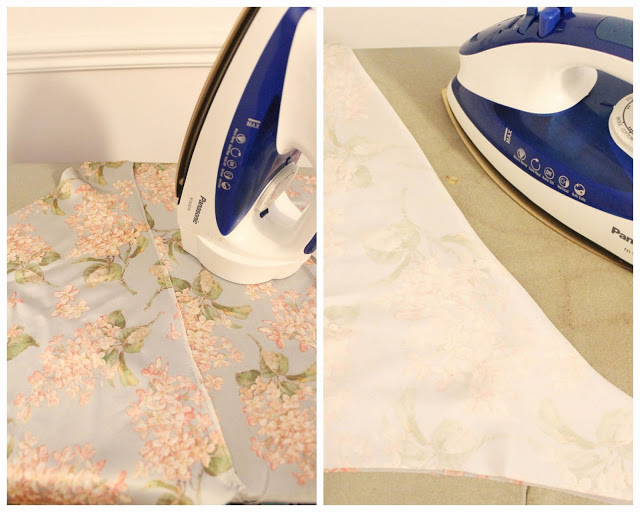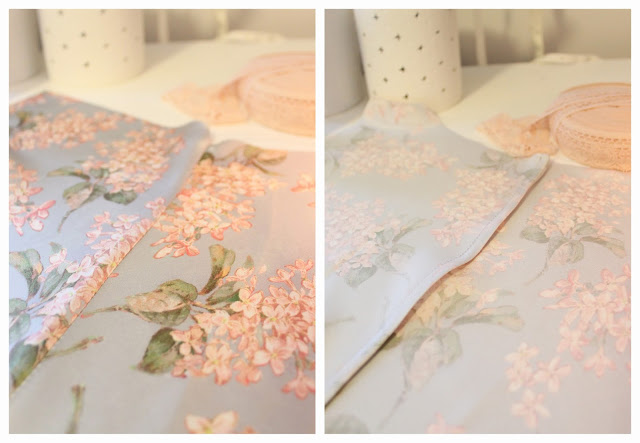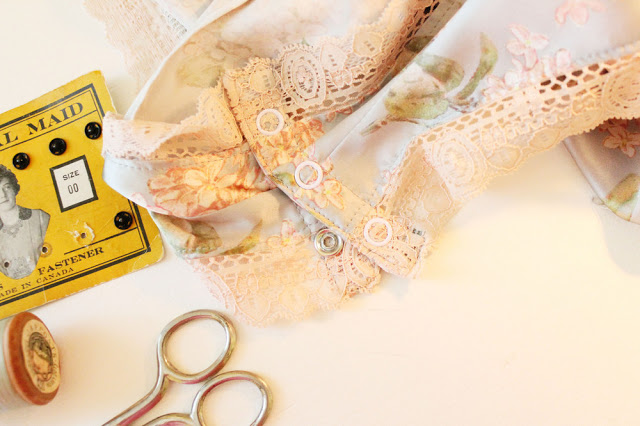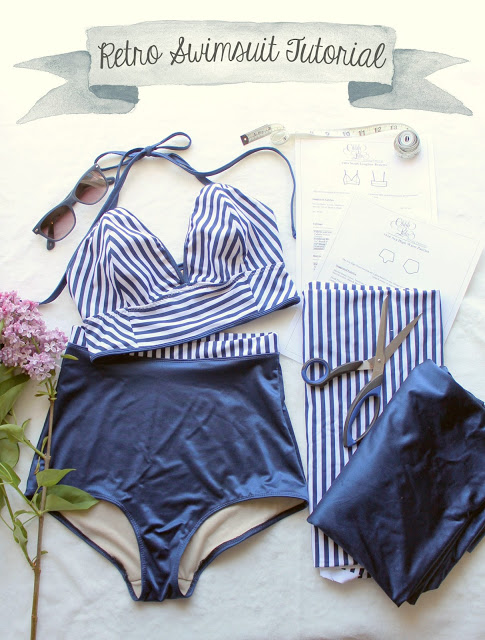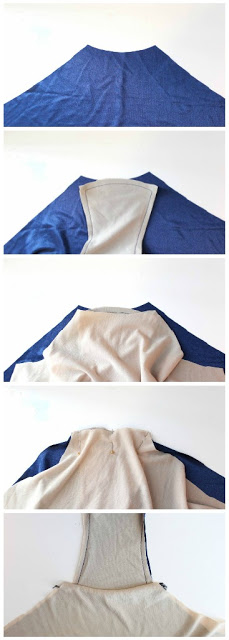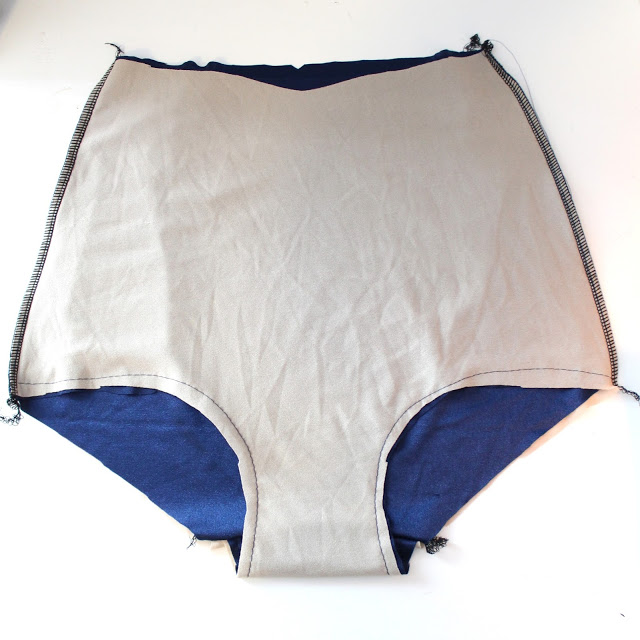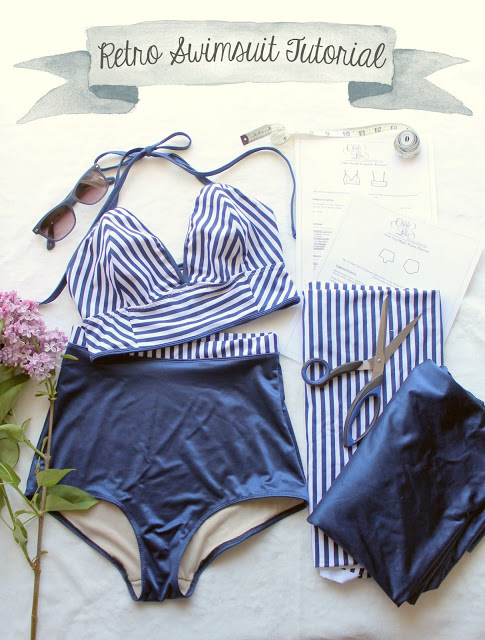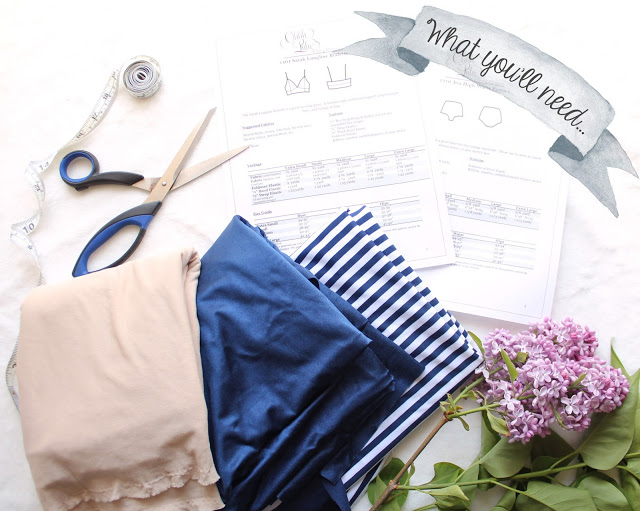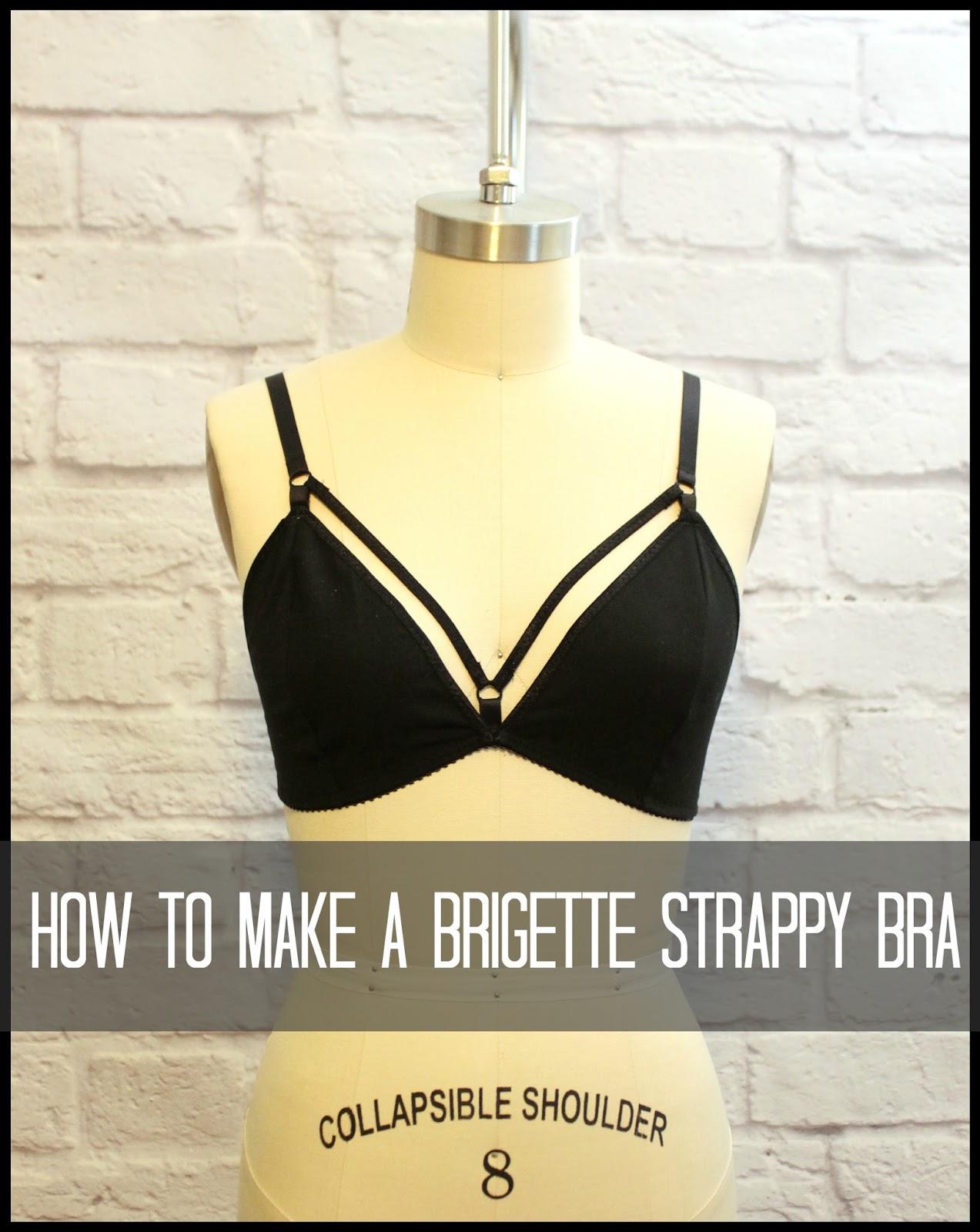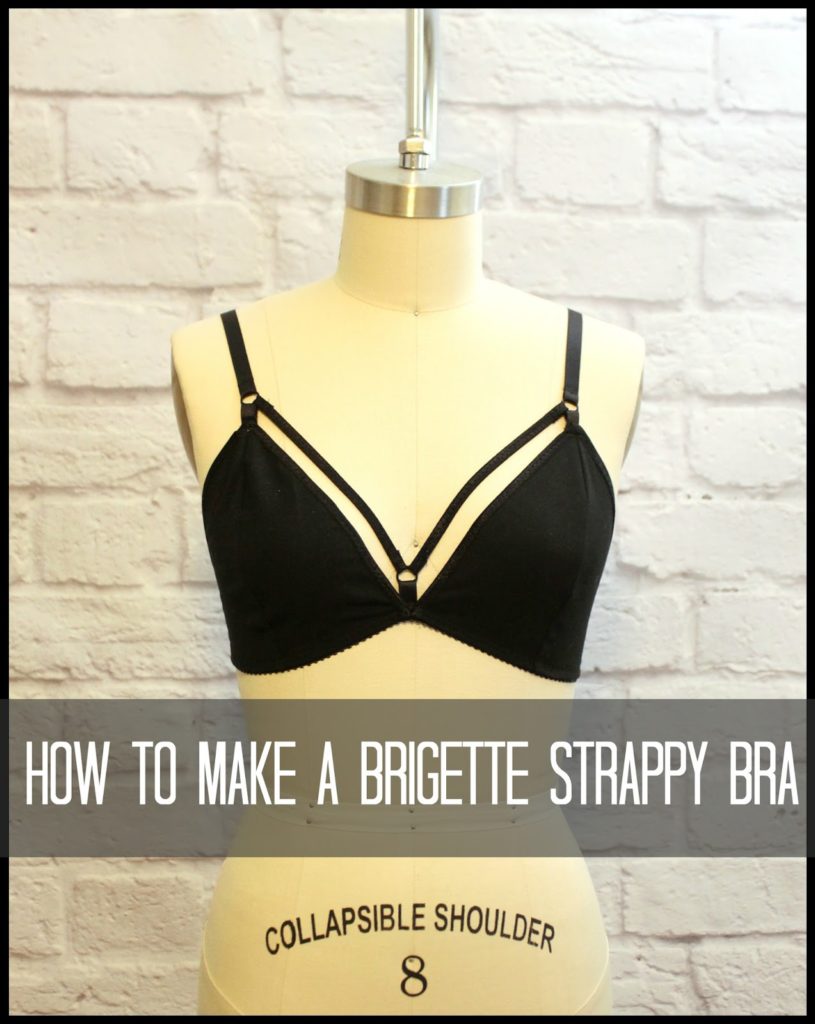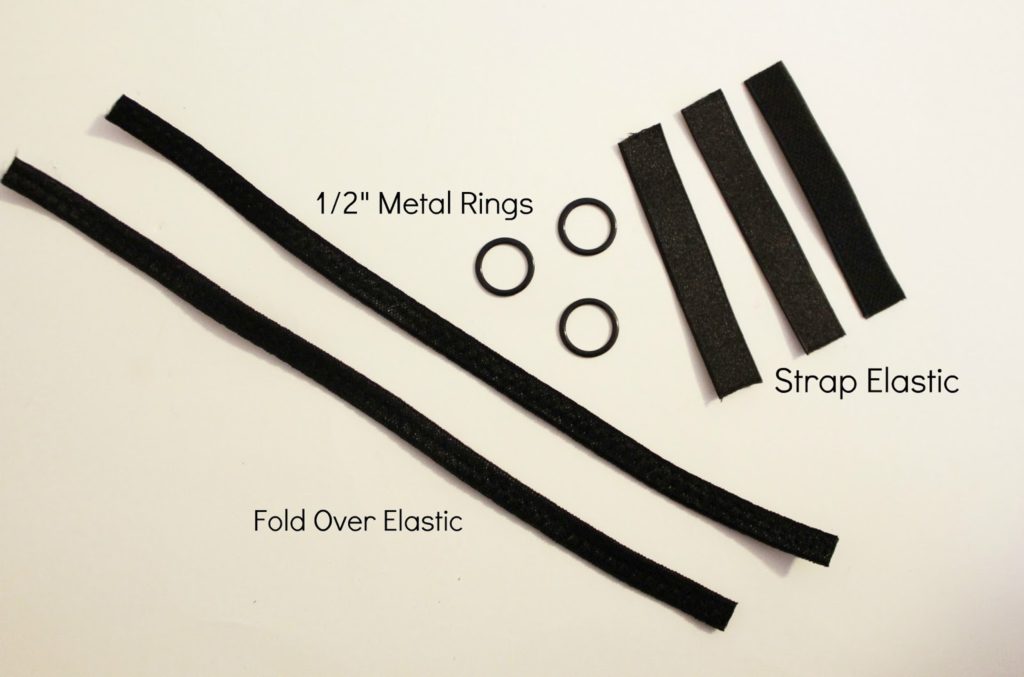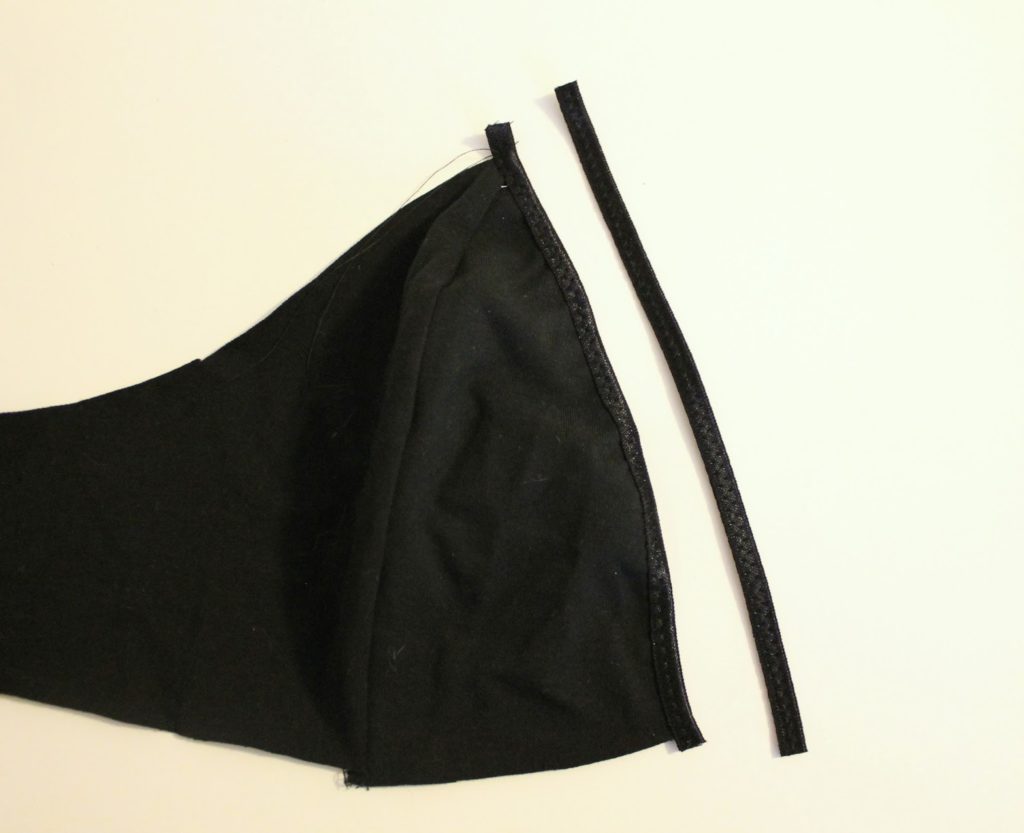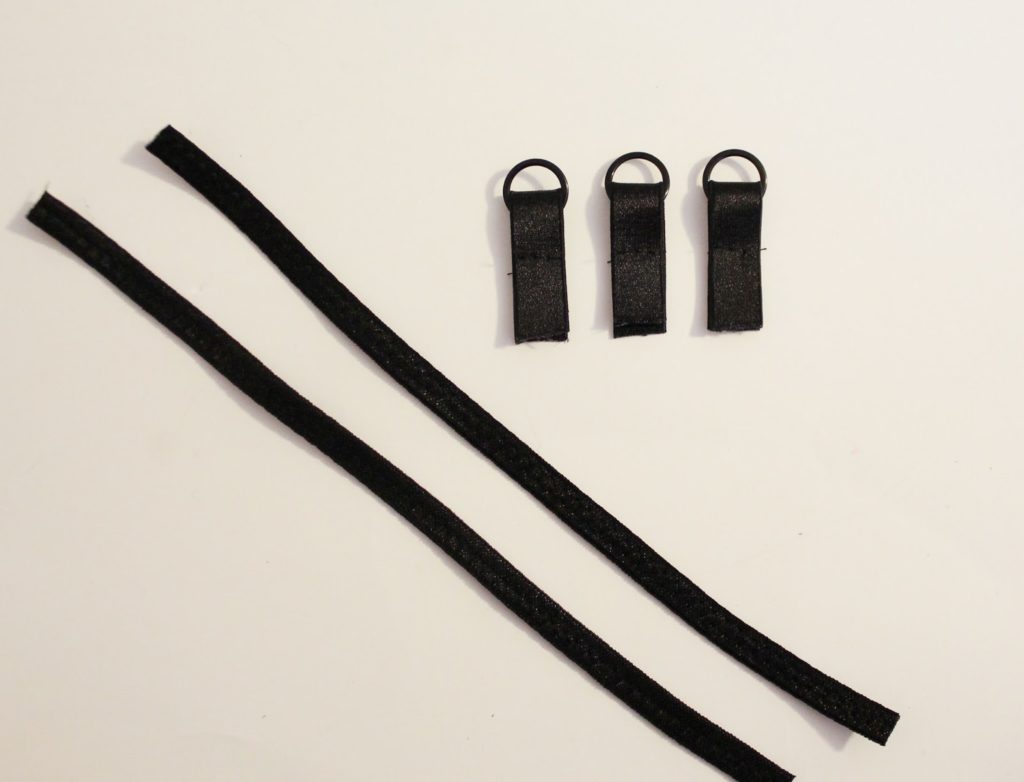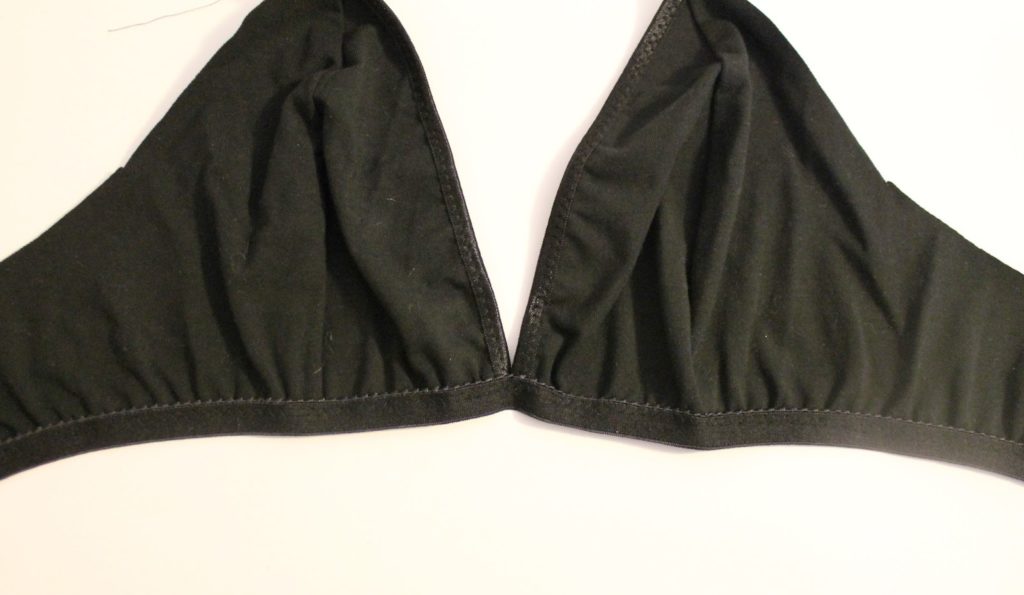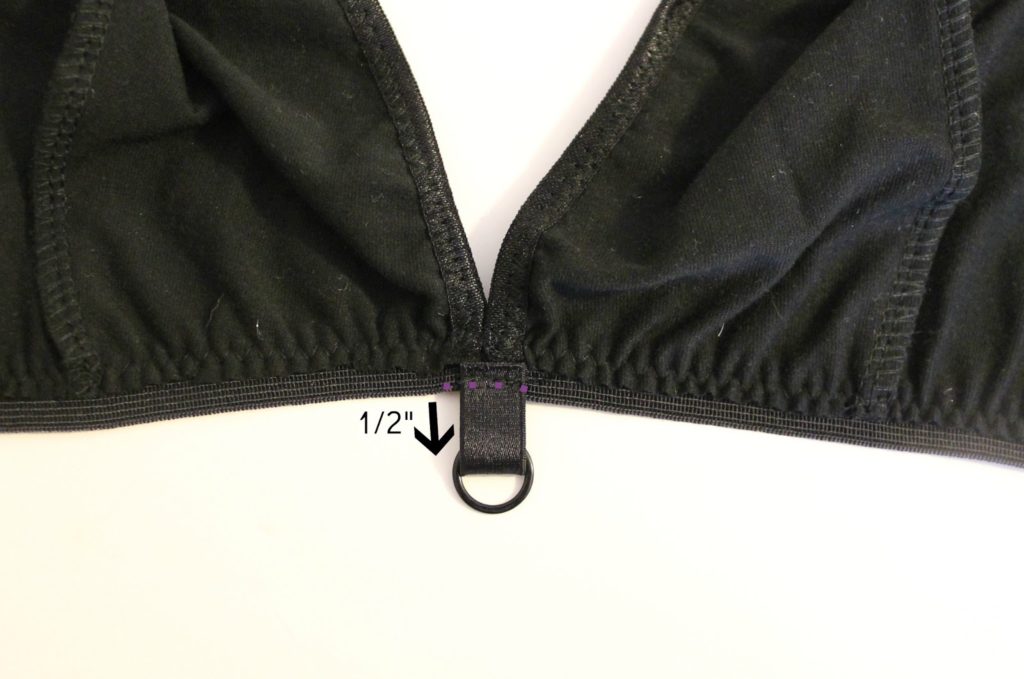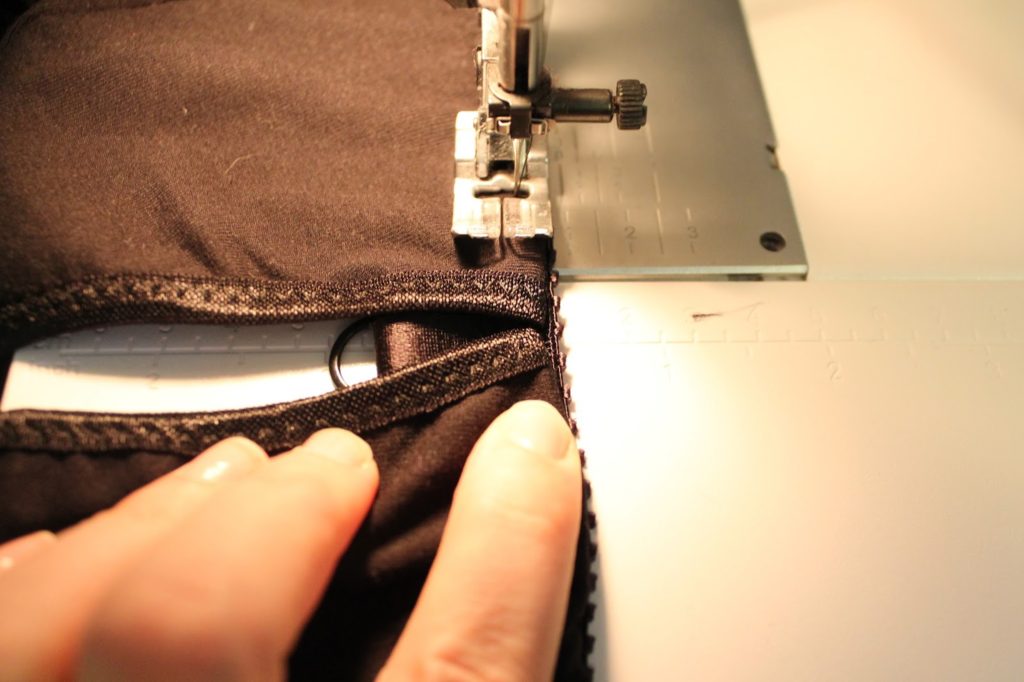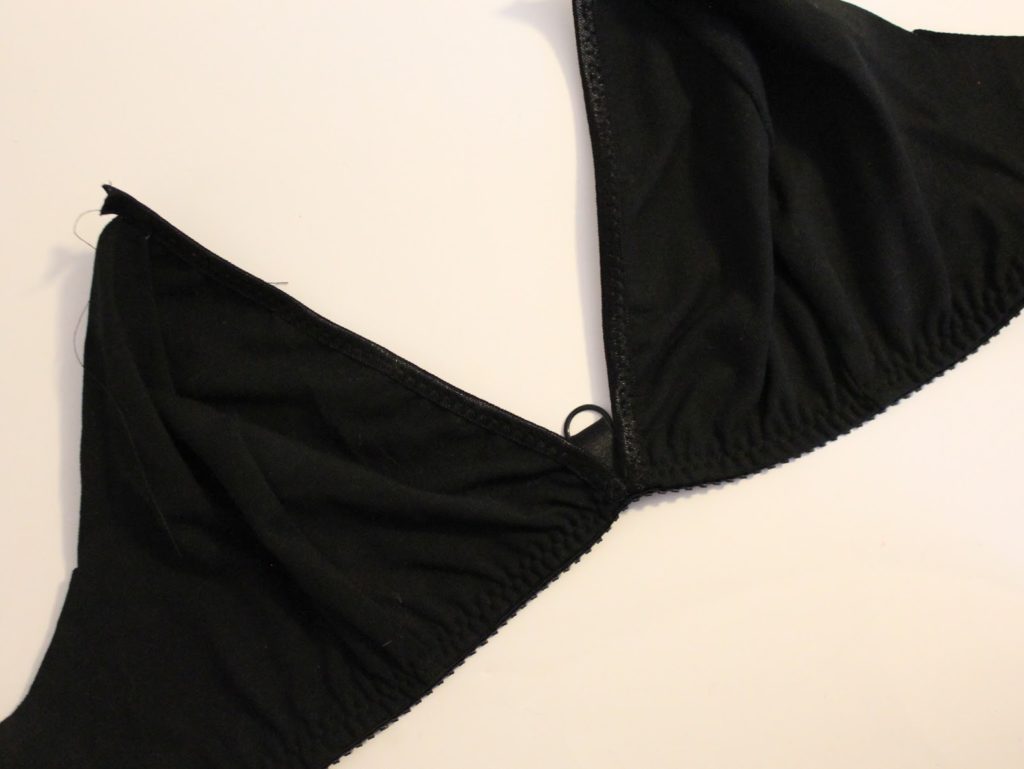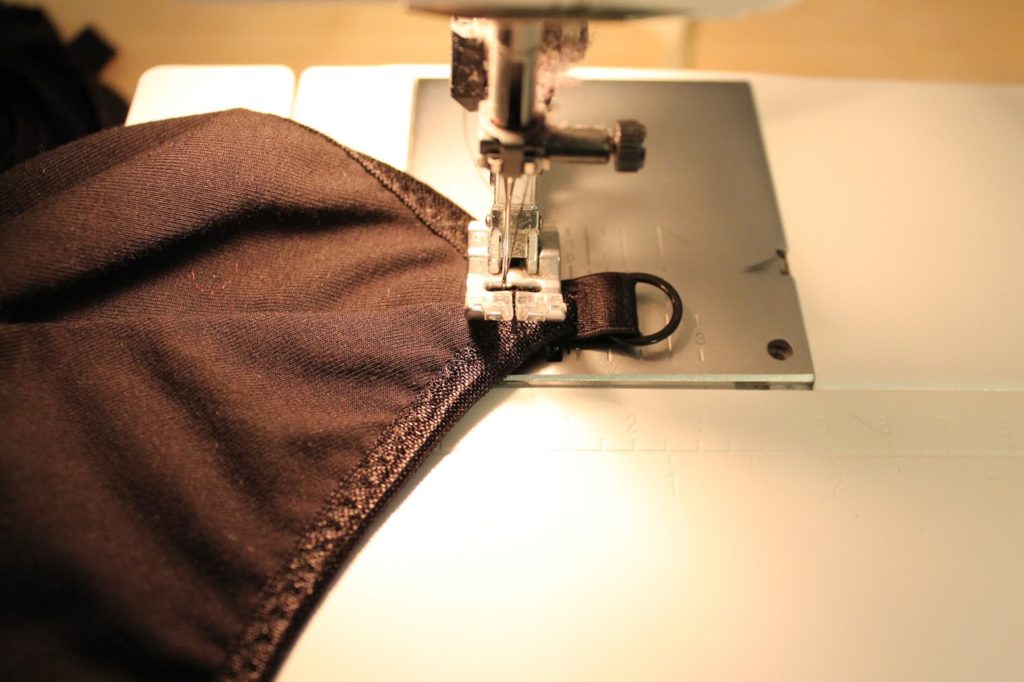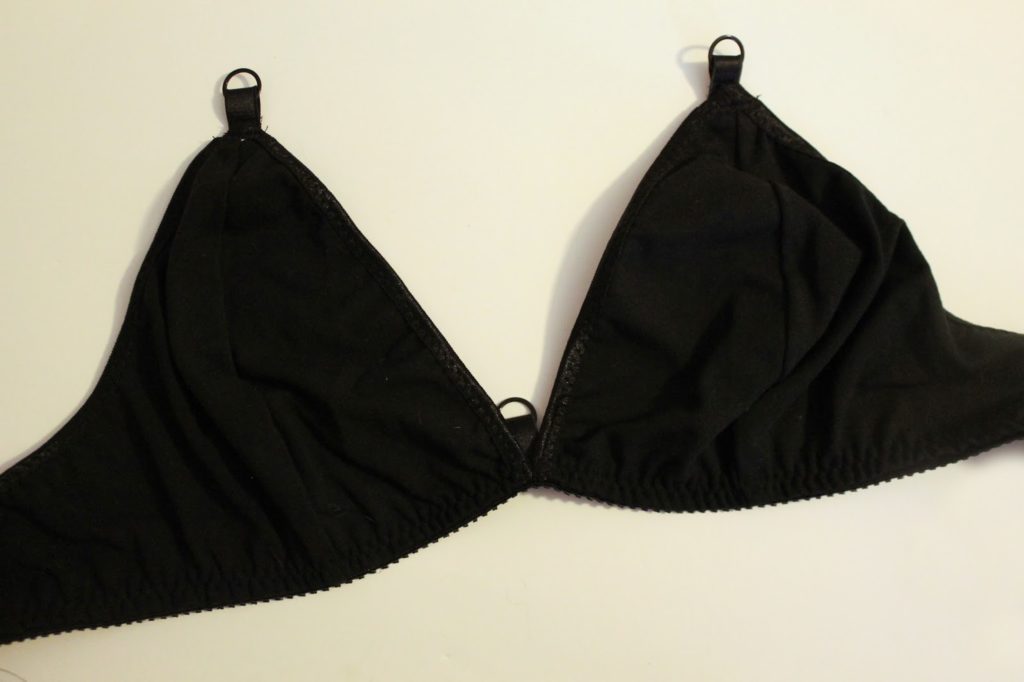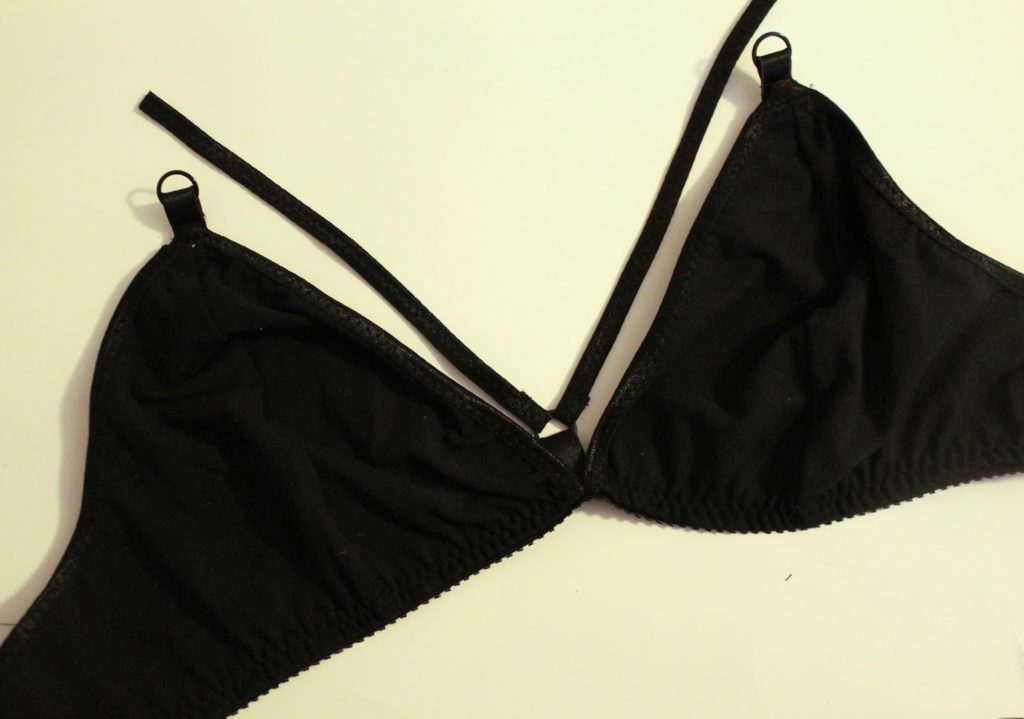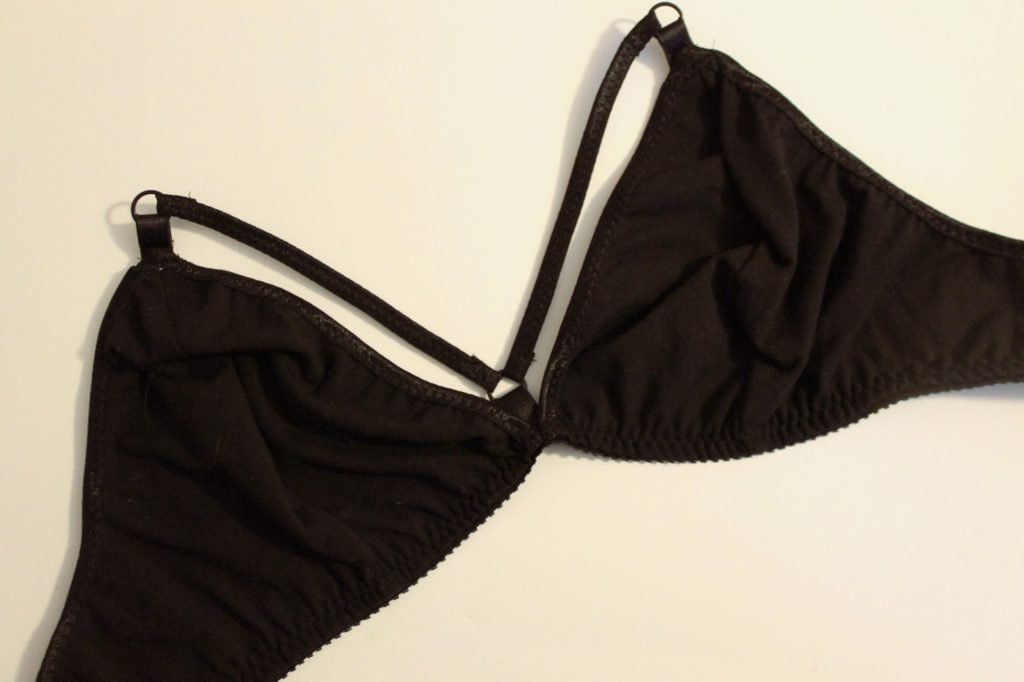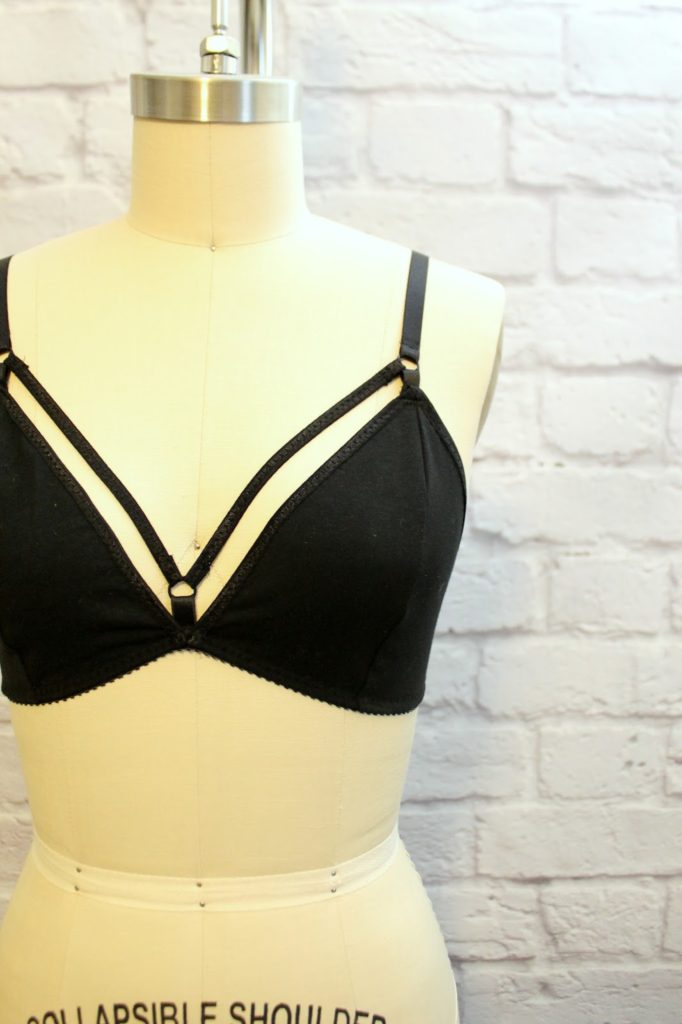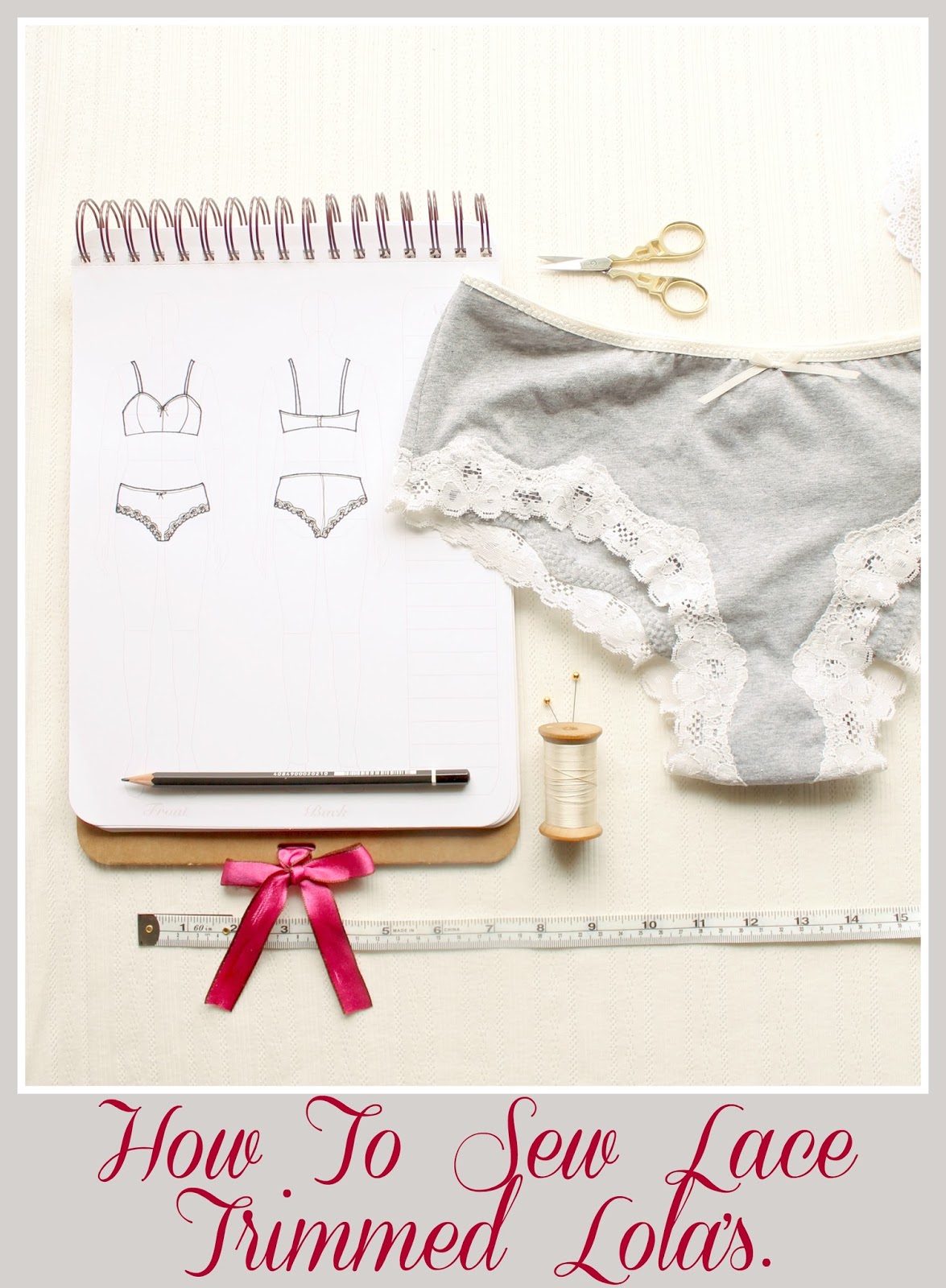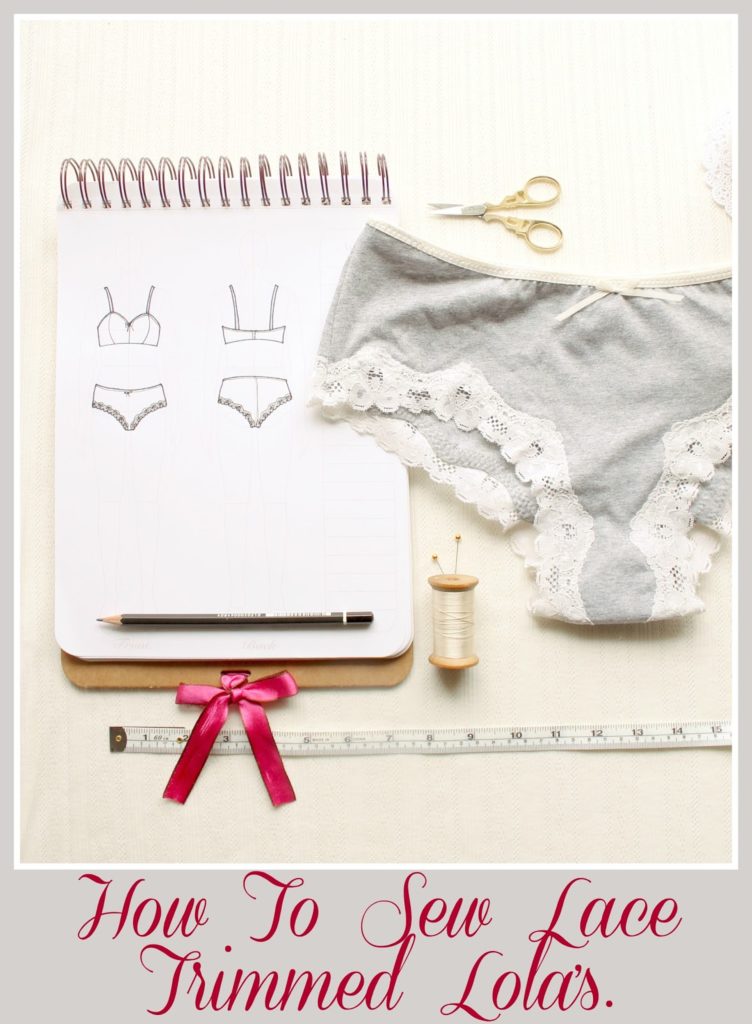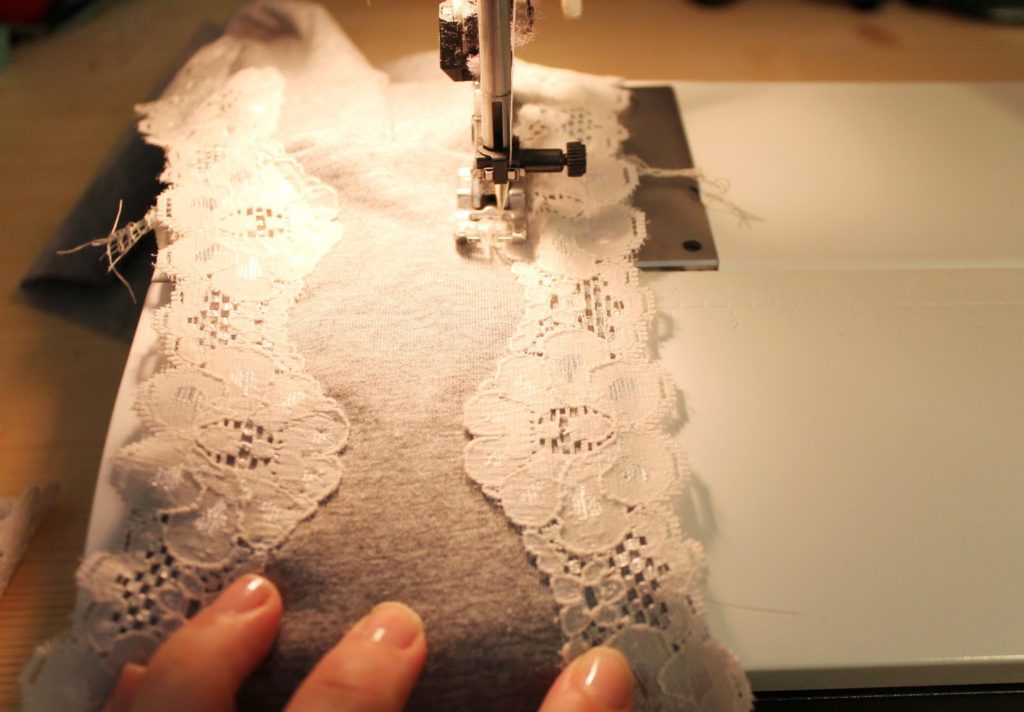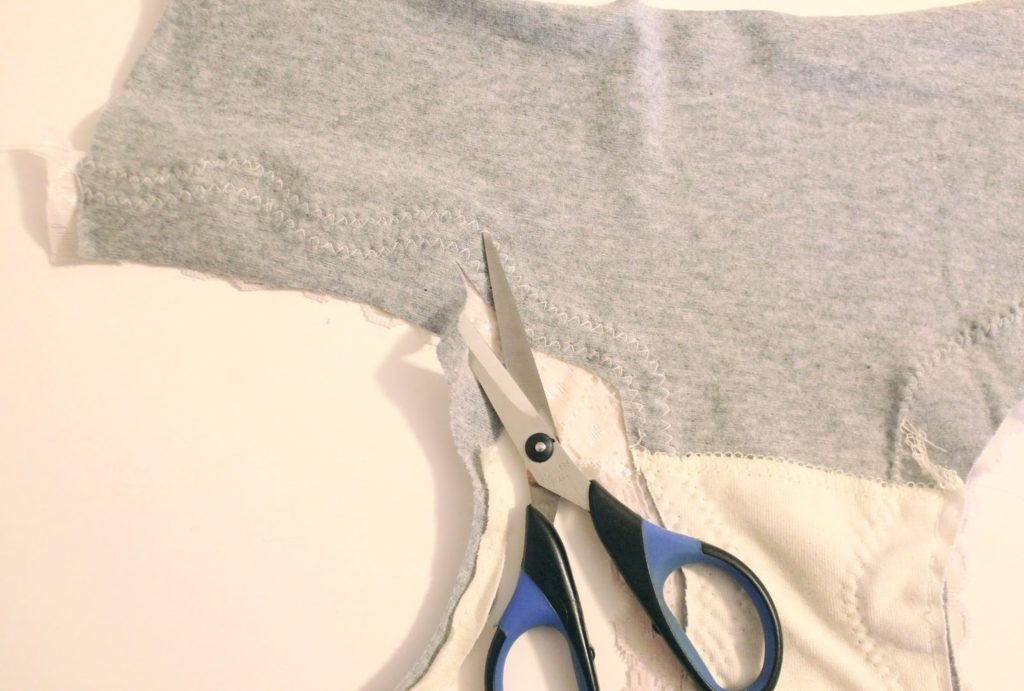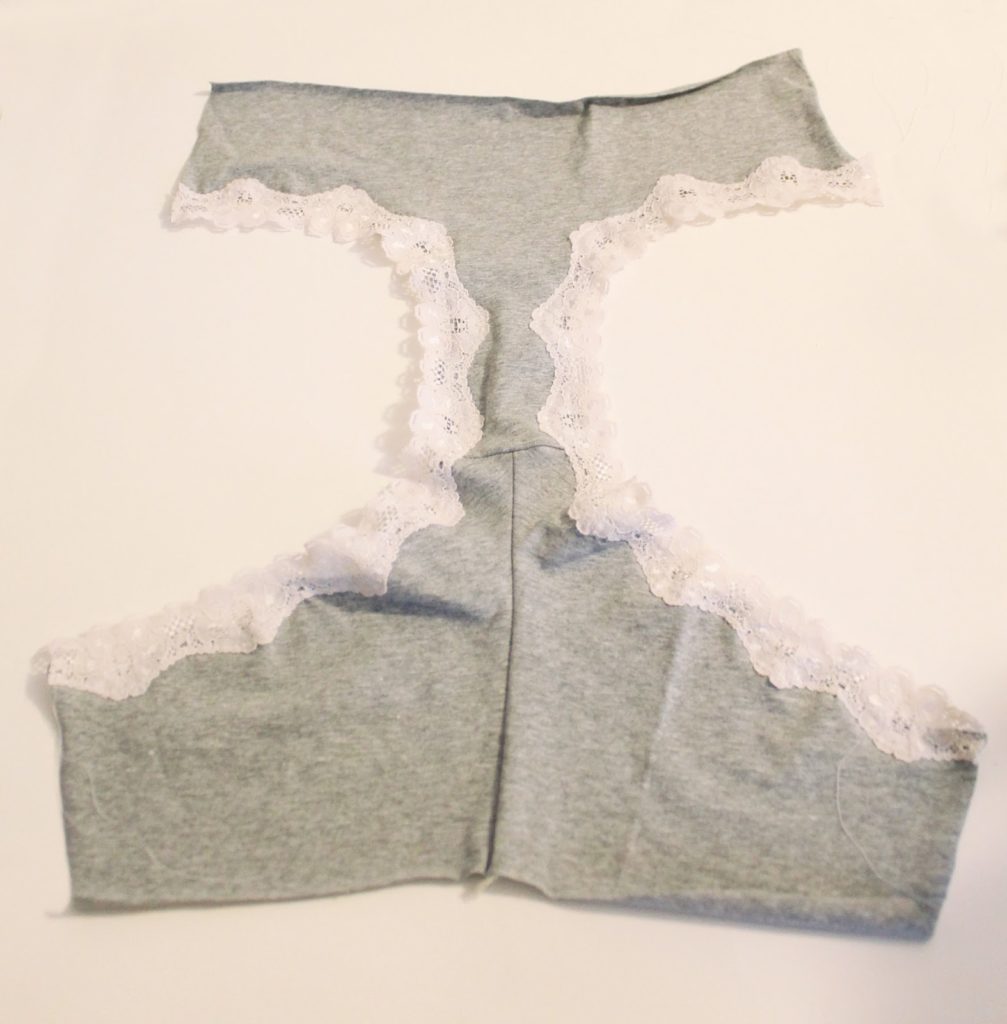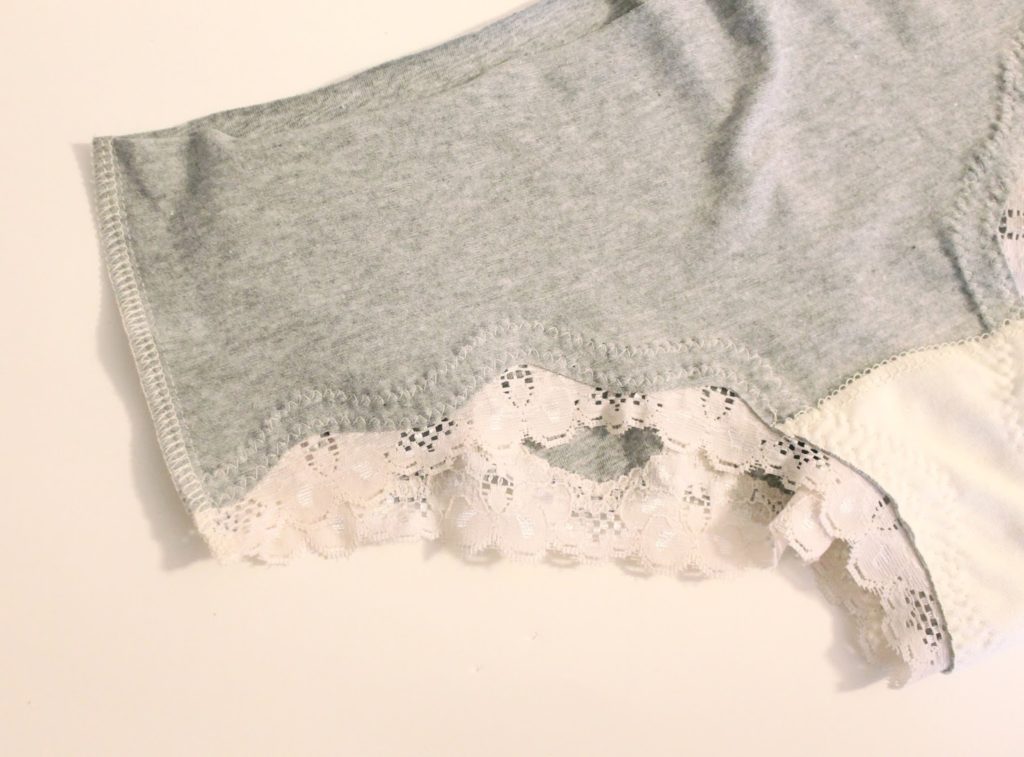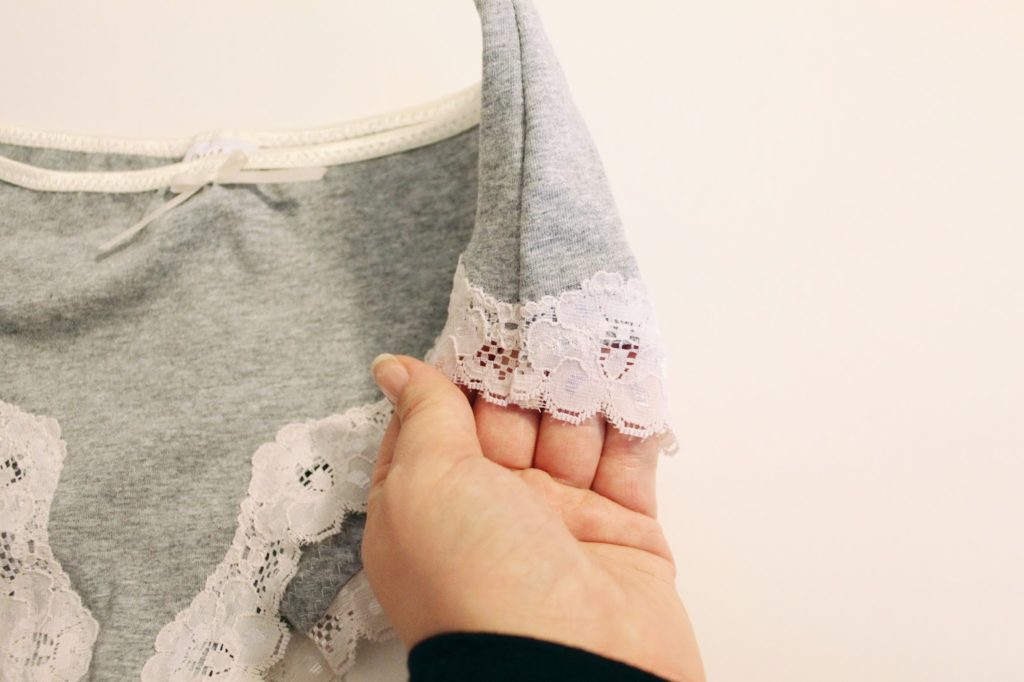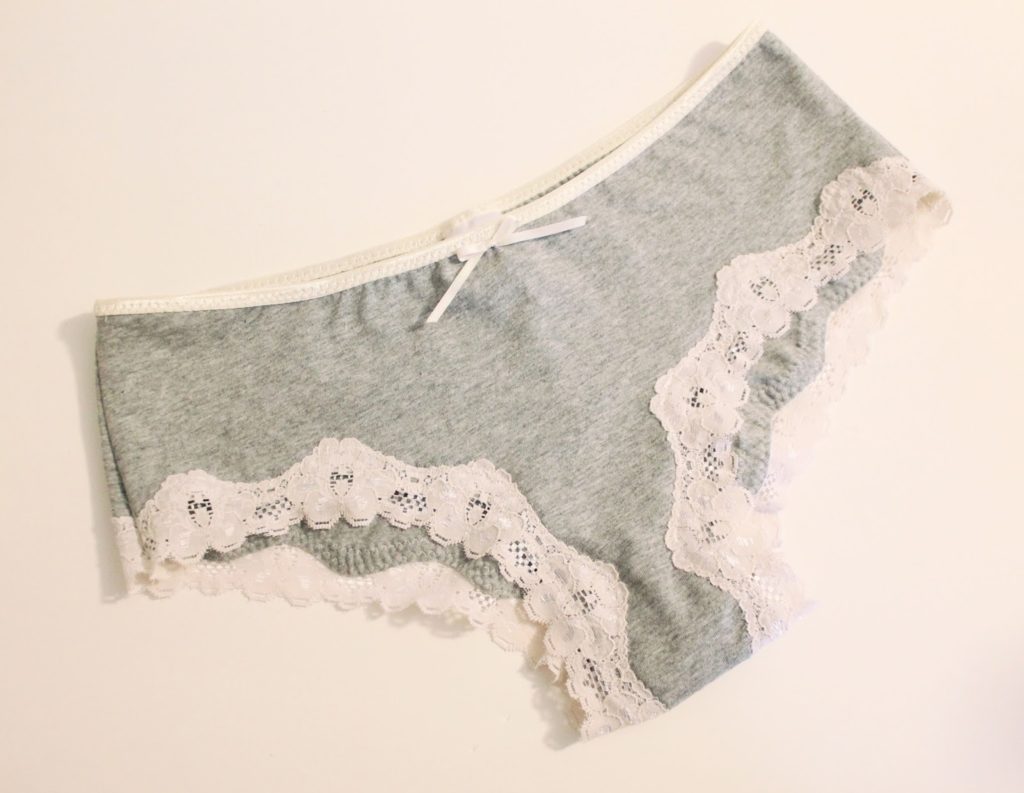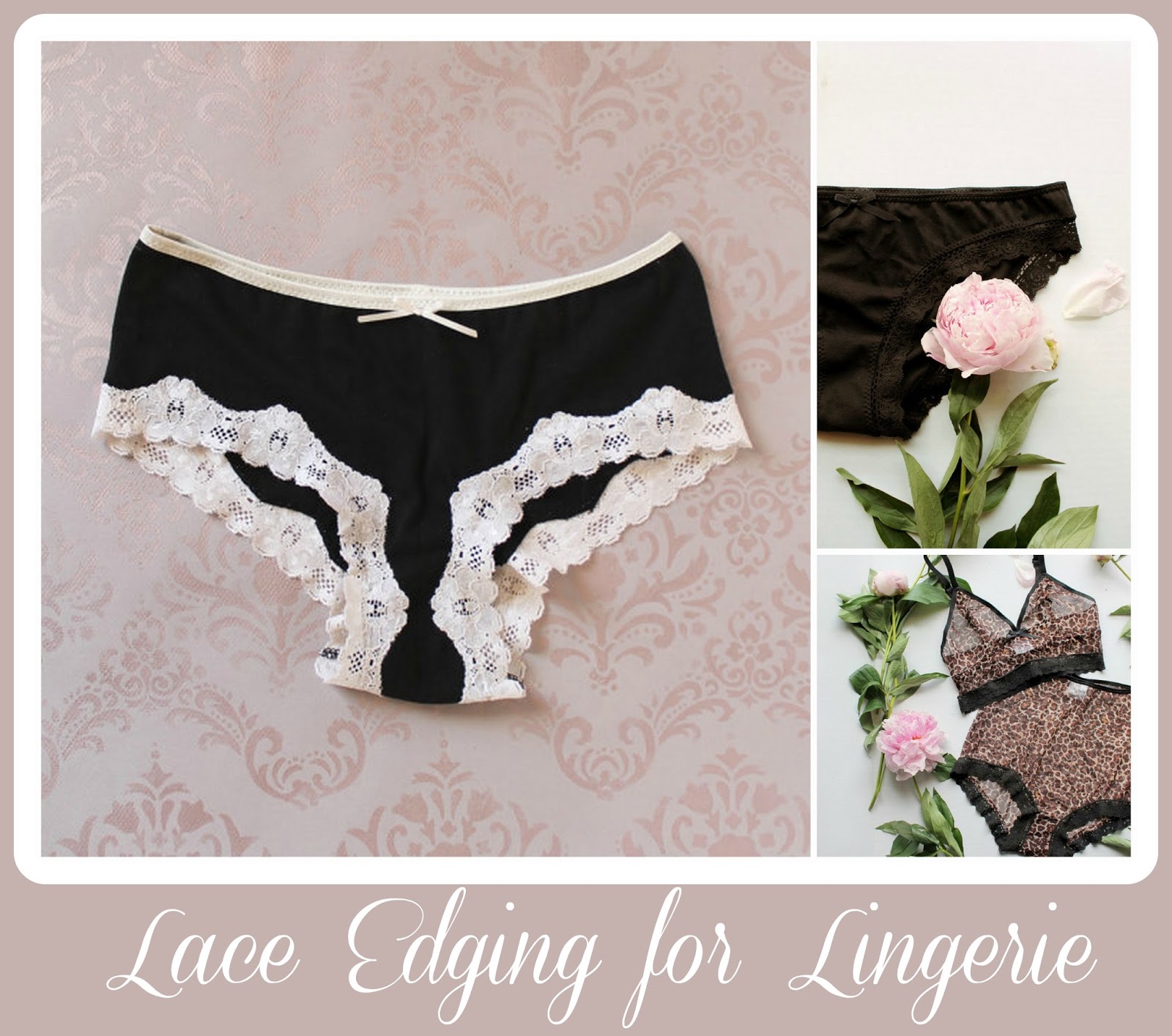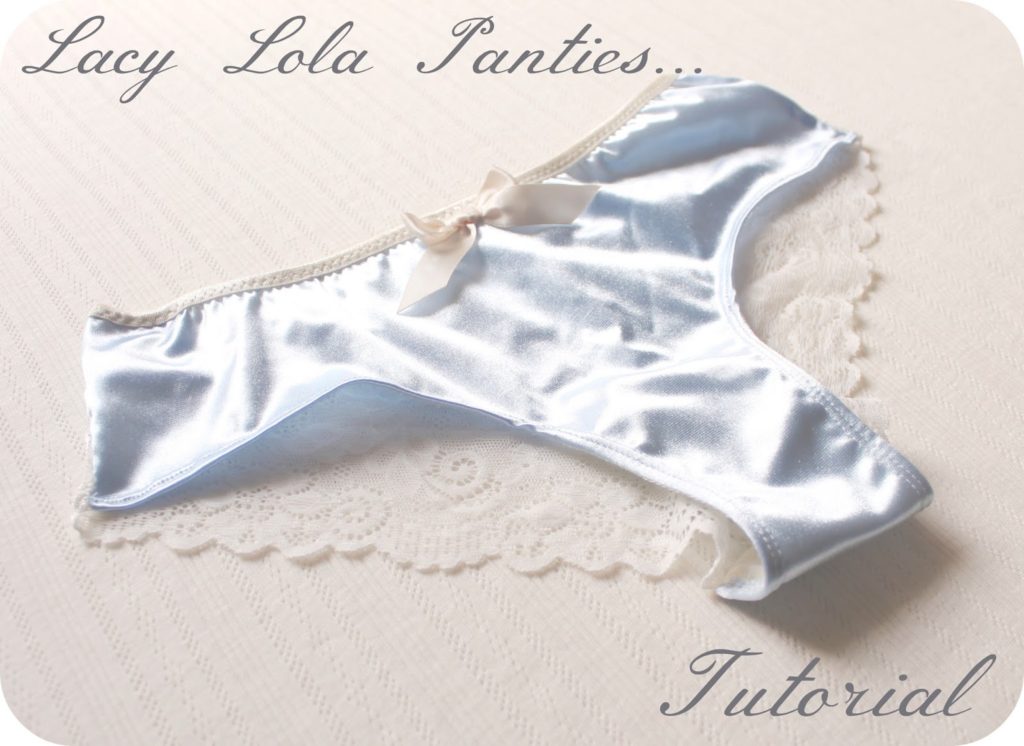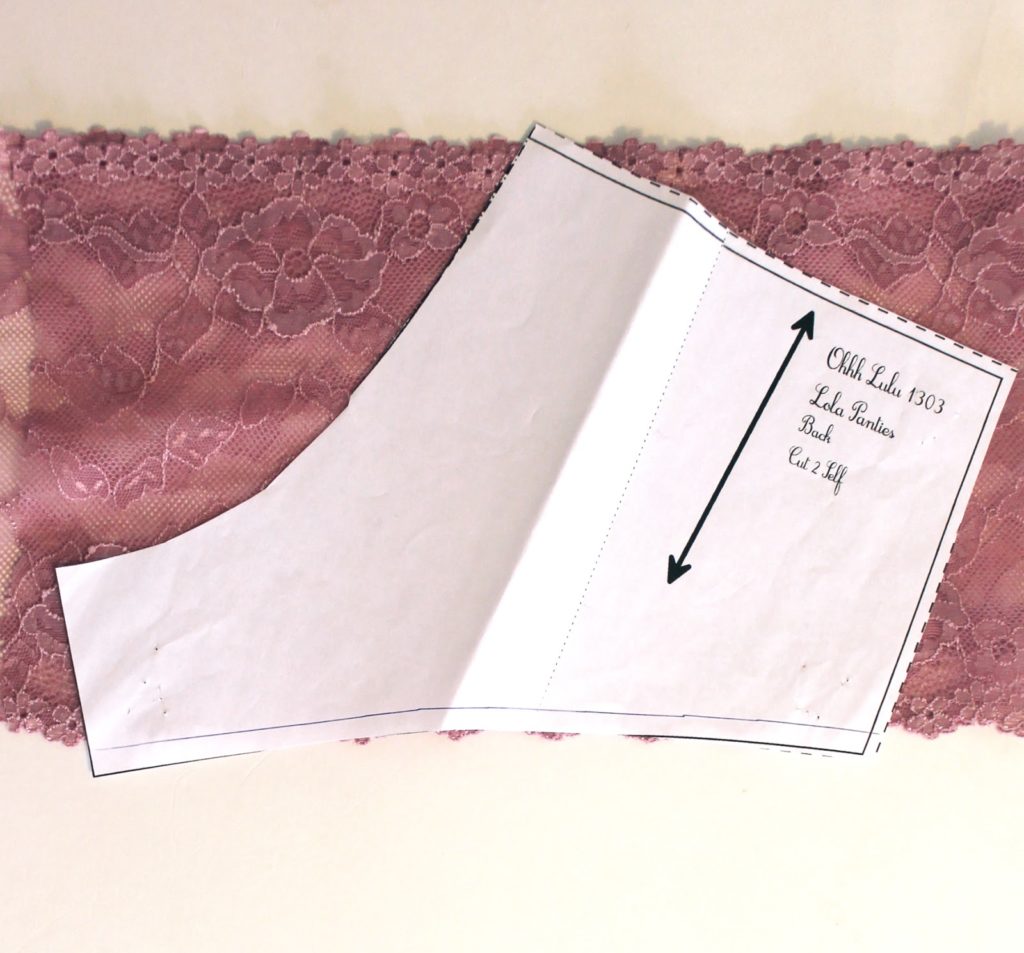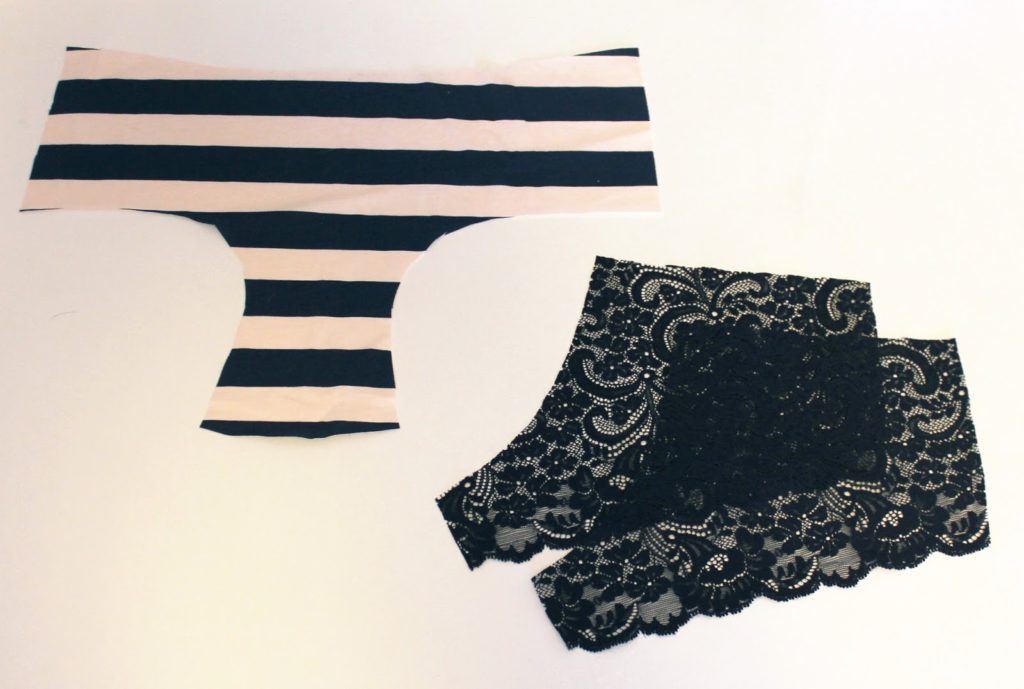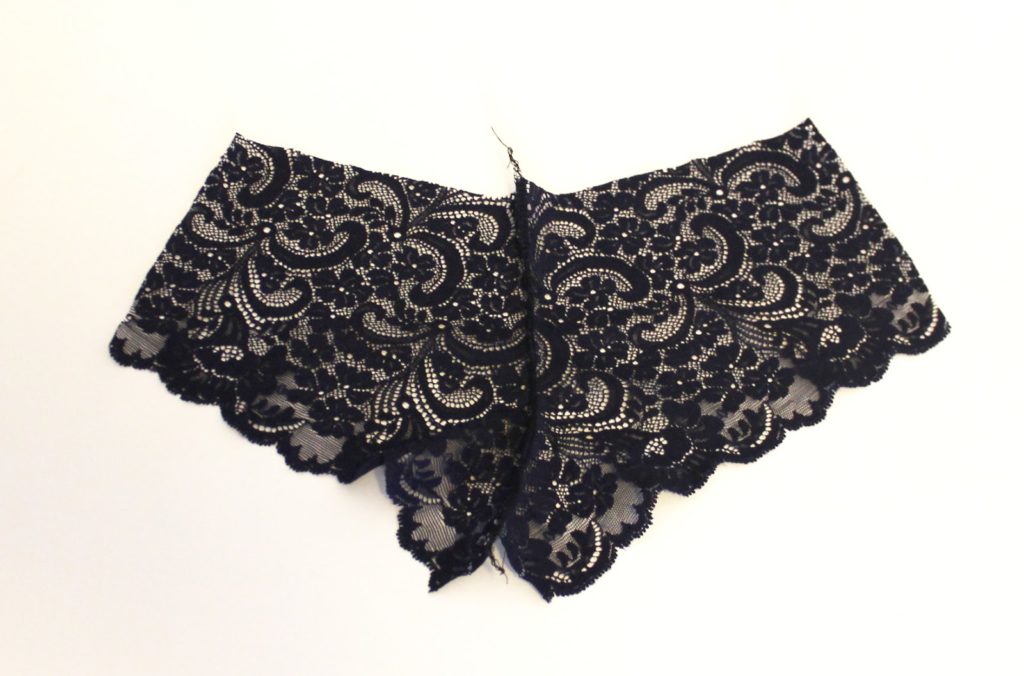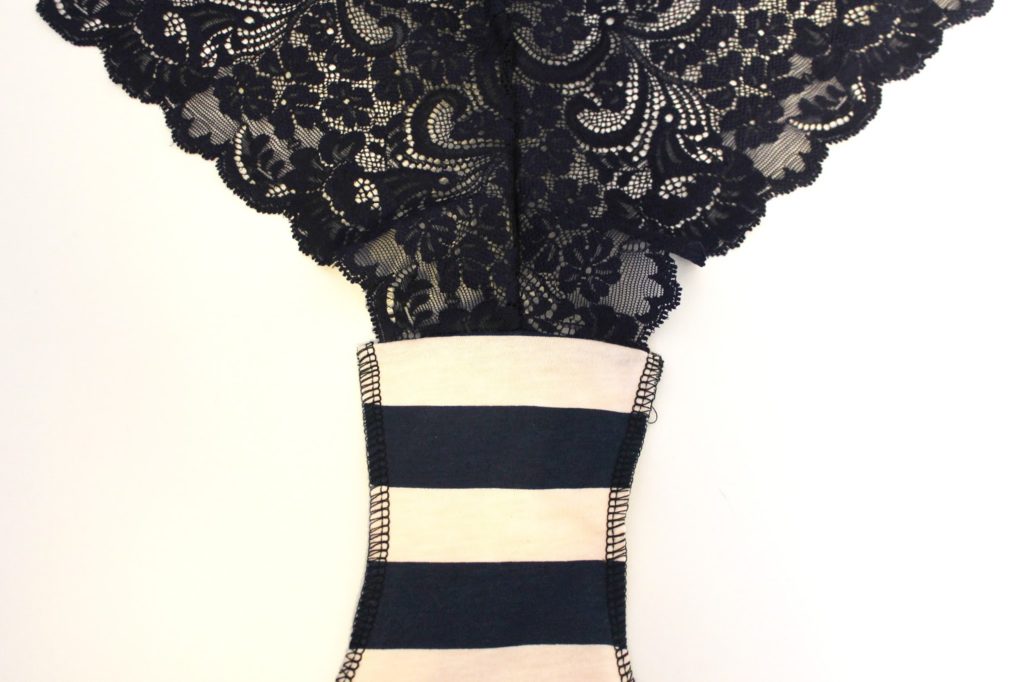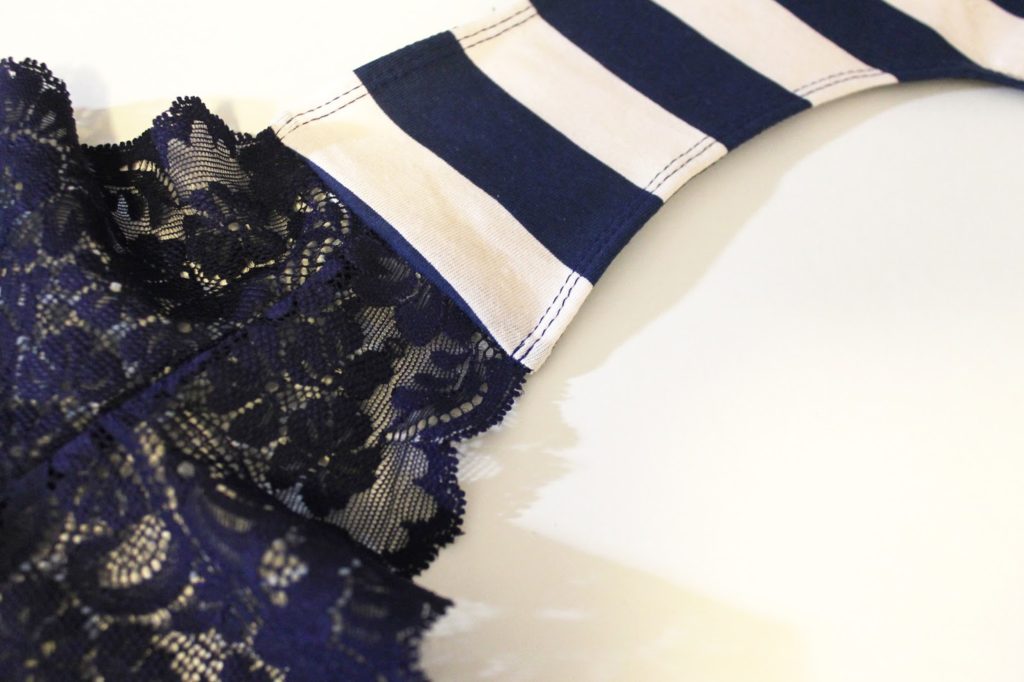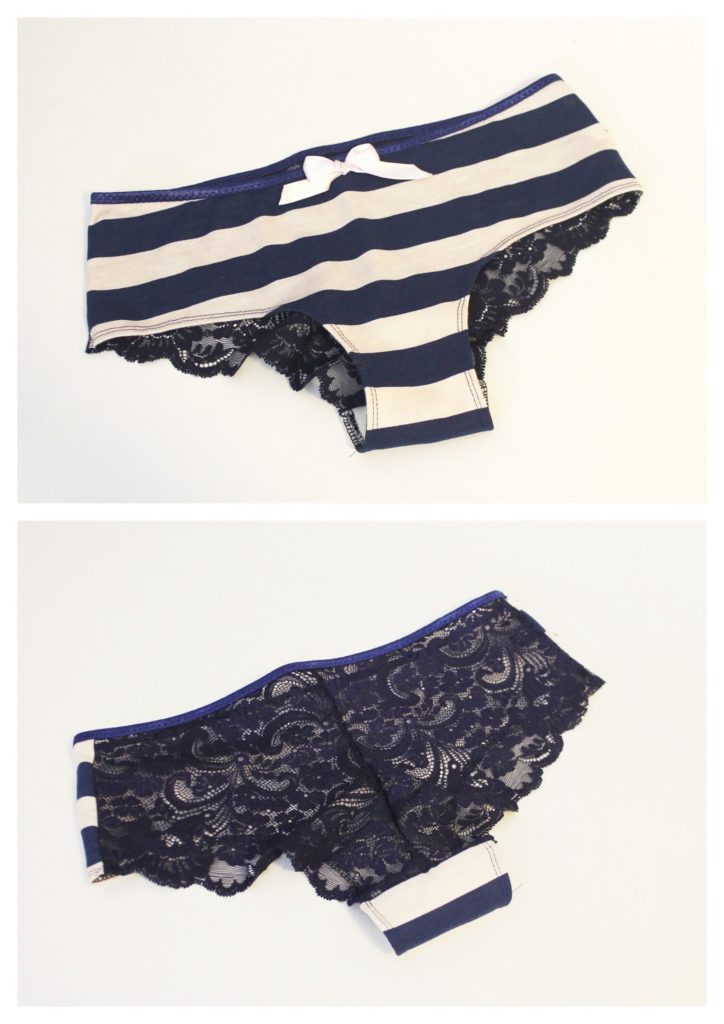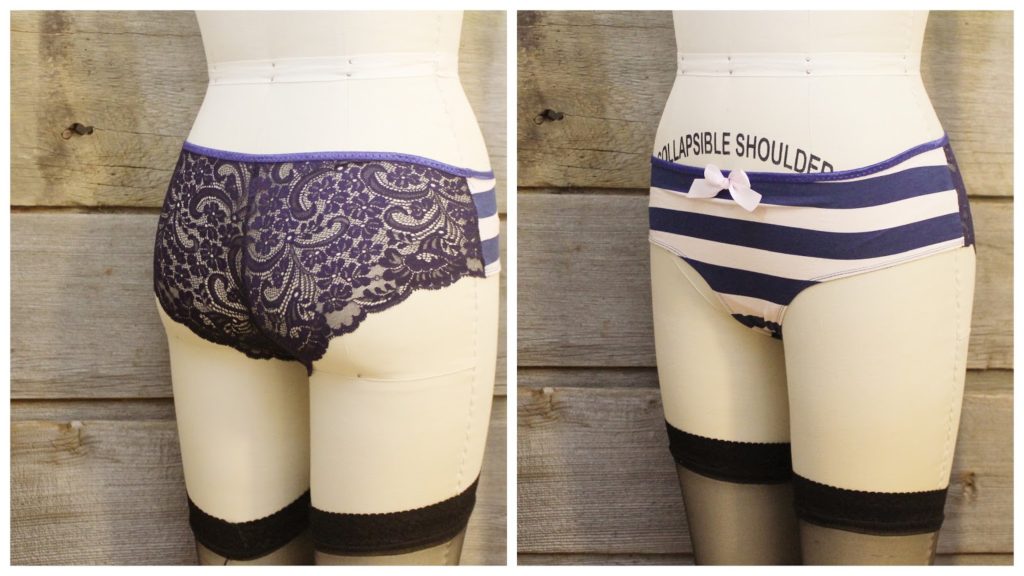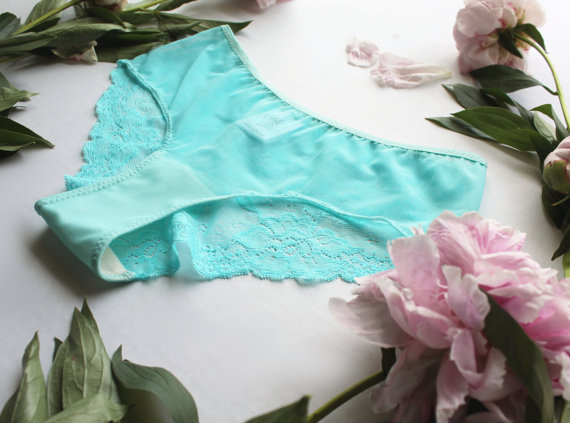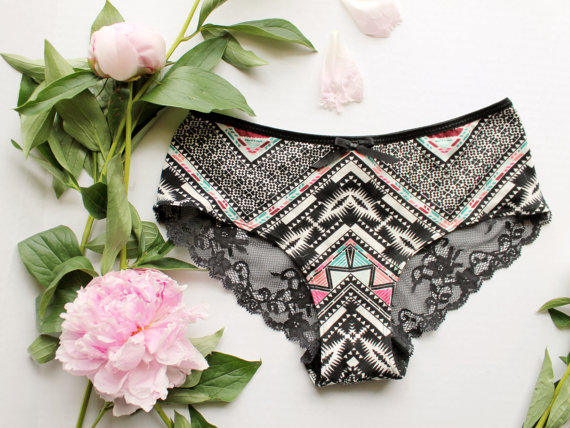Tutorial
What you need:
1. Any triangle front bra pattern, like my Josephine, Scarlett (which I have used here), or Brigitte Pattern.
2. Supplies as outlined in the pattern.
3. G-hook or Front Clip
Instructions:
1. Following the pattern instructions, assemble cups and apply elastic around front edge.
2. Beginning at the center front and leaving a 1″ tail, apply the band elastic along the lower edge of the bra. Leave a 1″ tail and the end.
3. Feed one end of the elastic “tail” through the closed end of the G-Hook. Turn elastic towards garment and stitch in place.
 |
| Your hook should be upside down at this stage! It will get flipped around soon. |
That’s it! now you have a neatly applied front hook closure! Enjoy!
Rings and Sliders – I like to use nylon coated metal rings and sliders. They come in a variety of colours and sizes. I always prefer to use metal over plastic for durability.
Strap Elastic – Generally plush on one side (the side that goes against your skin), and matte or shiny on the exterior. It comes in various widths, with the standard being 1/2″.
Bra Back Closures – These hook and eye closures come in various sizes, with the average being 2×3 hooks. The inside of these are plush, so they’re soft against your skin.
Fold Over Elastic – I like to use fold over elastic for finishing the upper edge of bras and for waist and leg lines of panties. It comes in a million shades of elastic, and if you can apply binding, you can apply fold over elastic.
Band Elastic – Just as the name implies, it goes around the band, or lower edge of the bra. One side is soft and plush and it often has a decorative edge. Band elastic comes as narrow as 1/4″, and up to 1″ wide. My preference is 1/2″, or 3/4″ for larger bust sizes.
I’ve assembled some kits, in black, ivory, pink and navy, that contain all of the most often needed lingerie supplies in the most common sizes. Each kit contains 1/2″ strap elastic, with 1/2″ ring and slider set, 1/2″ plush band elastic, satin fold over elastic, a 2×3 hook and eye closure, and two satin bows, hand tied by yours truly. There is enough elastic to complete 1 bra and 1 pair of panties.
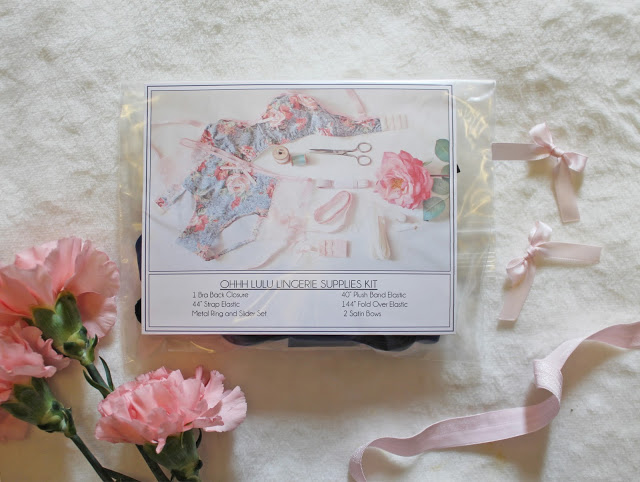 |
| View my supplies on Etsy |
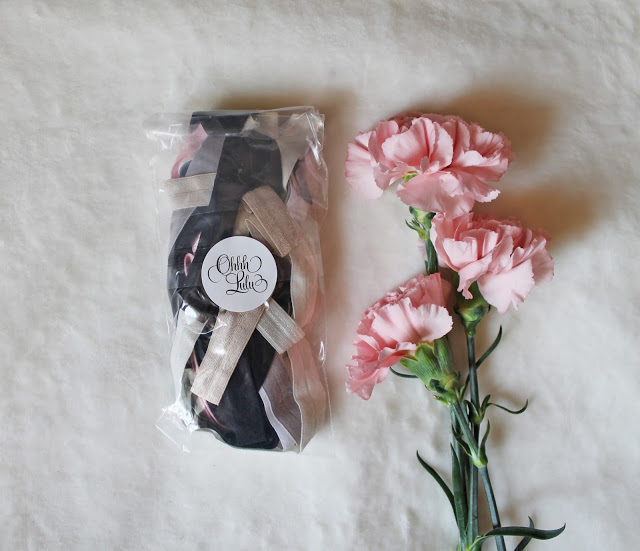 |
| View the Remnant Grab Bags on Etsy |
What You’ll Need:
1. The Emma Romper Pattern
2. A fabric with a good drape. I’m using a Liberty of London silk.
3. Lace trim for the neck and legs.
4. Sew in or Hammer in Snaps
5. Small Scrap of Interfacing
6. 1/2″ Strapping and bra strap rings & sliders
7. Needles and Thread
Instructions:
1. Begin by applying lace along Front Neckline, as indicated in the Pattern Instructions.
2. With the wrong sides together, pin your center front seam. Stitch together using only a 1/4″ Seam allowance.
5. Stitch seam closed using a narrow, 1/4″ seam allowance.
7. Sew lace onto the right side of the garment. Turn seam allowance under and press. Top stitch in place. An extra pretty way to finish the leg openings would be with appliqued lace. Check out my hero, Carine Gilson for some dreamy inspration.
8. In this intance, I’ve finished the raw edge of the crotch seam with self fabric. I measured the width of the crotch seam (including the lace portion) and added 1/2″ to either side. I wound up with a measurement of 5″. I cut 2 pieces of fabric and 2 pieces of light weight interfacing that were 5×2″
9. Iron interfacing onto the wrong side of your fabric strips. Fold in half lengthwise and press.
10. Pin and stitch on to the right side of the Front of the Romper.
12 Turn strip towards the inside of the garment, and top stitch all the way around the exterior of the strip. Repeat this process on the opposite side.
2. Cut your fabric – I’m lining the entire thing.
5. Sew your side Seams and try them on. They should fit snug all over.
6. Sew the waistband into a continuous loop. Fold in half and press with a light iron. Attach to the waist of the panties, lining up your side seams.
7. I top stitched down my waistband seam allowance using a twin needle.
That’s it! I’ve found it takes some getting used to sewing swim fabrics. They are slippery and can be hard to manage. But, the more bathingsuits I make, the better they get!
Here I am in mine. Neverind the pug butt and falling down fence. I made Izzy a matching suit too! Now hopefully the weather gets a little warmer so I can test mine out at the beach.
What you’ll need:
1. The Sarah Bralette Pattern and Ava Panties Pattern
2. Coordinating Swimsuit (Spandex) fabric.
3. Swimsuit Lining
4. Thread
5. Twin Needle
6. Rotary Cutter (optional, but handy)
Instructions:
1. Print out your patterns.
2. Trim away margins where indicated.
3. Tape pattern together.
4. Optional: I wanted to have a diamond motif pattern layout on the back, so I added seam allowance to both my back pieces, instead of cutting them on the fold.
5. Make adjustments. I have a slightly larger cup size than what I’ve drafted this pattern for. All I have done is cut between a size small and medium. If you need a significant change to the bust area, you can slash and spread the cups to increase the size. You can also wing it, like I sometimes do, by just exaggerating the curve of the cup and adding some height. If you are more petite, just straighten that sucker out. Check out my tutorial on adjusting the cup size of my Jasmine Bra for some further instruction.
 |
| Cutting between a small and medium |
5. Optional Pattern Placement: I have drawn a line on my pattern pieces so I know where to place my stripes. I wanted to create a chevron motif over the bust so I took a little bit of time before cutting my fabric to make pattern placement indicators on my pattern pieces.
12. Baste Binding along front edge of cup using a narrow zig-zag stitch. Gently pull on the binding as you stitch. You wan the suit to contour along your bustline. When you’re done, turn the binding under and top stitch with a twin needle. If you don’t have a twin needle, you can also zig-zag stitch. The binding gets applied exactly the way you’d apply any binding (though I apply mine to the right-side first). I made a Video! Watch!
 |
| Raw edge trimmed back, binding is ready to be turned under and top stitched. |
 |
| Twin-stitched binding. |
13. Baste Lining to Center Front Band.
15. Stitch cups to Front Band
19. Now it’s time to bind the upper edge of our tops. I used a length of binding approximately 80″ long (I had to attach two pieces in order to get this length). I started basting on my binding approximately 31″ down the length of the binding – this extension forms your strap. You will be left with a long extension on the opposite end as well.
21. Cut your straps so that they are both an even length and tie the ends into knots.
I’ll post the tutorial for the coordinating bottoms in a separate post!
8. Apply elastic to the remaining upper edge of the bra, leaving a 1″ tail of elastic beyond the “peak” of the cup – follow the pattern instructions for how to apply elastic.
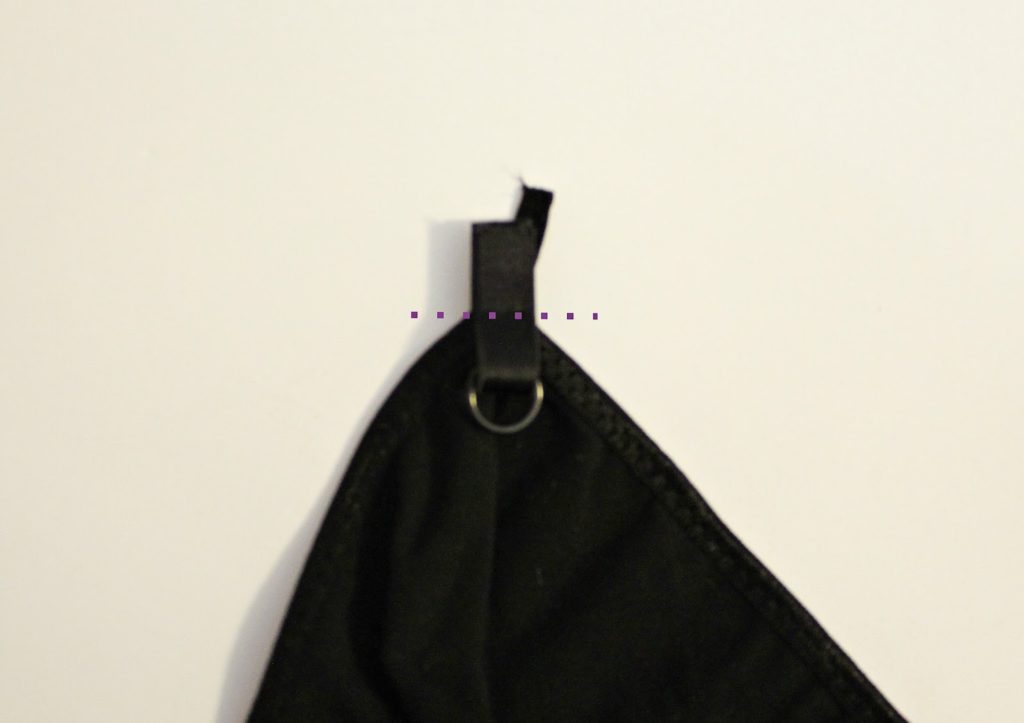 |
| (sorry for the fuzzy photo!) |
14. Follow the pattern directions to complete the straps and back closure.
And… that’s it! It’s a few more steps and some fiddly details, but this style looks great under loose tanks and sheer tops. You can easily use this same tutorial to add strap detailing to the Sarah Longline Bralette as well!
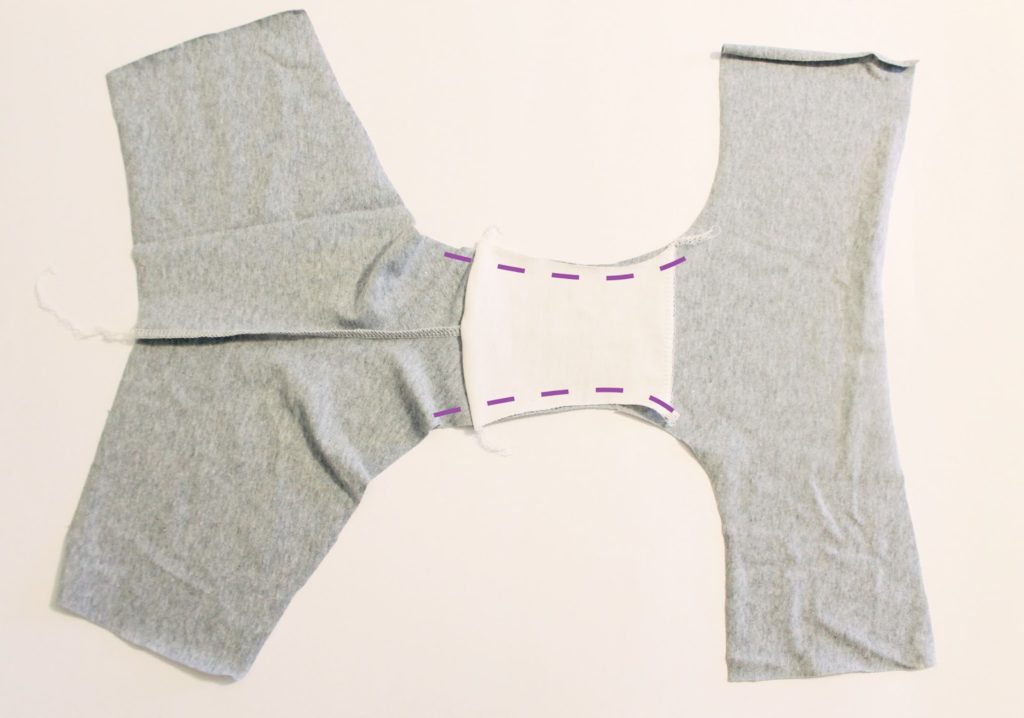 |
5. Sew your side seams, making sure that the lace hem meets up. Be sure to backtack to secure your seam and knot off your serged seam finish if you are finishing with a serger.
5. Finish waist with elastic and embellishments of your choice!
There are a couple types of stretch lace trimming you may find in a fabric store – the first kind has a decorative scalloped edge which gets appliqued to the right side of the garment. The second has a straight elastic edge that can be applied to the garment, turned under and top stitched. Here, I will demonstrate my two favorite ways to apply stretch lace trimming to lingerie.
Method #1: Straight Edged Lace, turned under.
1. With right side of the lace against the right side of the fabric, and straight edge running alongside the hem, serge or zig-zag the lace onto the garment. Depending on the type of garment you are sewing will determine what type of tension you want to apply to the lace. If you are using lace around the edge a garment that normally would just be twin stitched at the hem, do not apply tension to the lace. If you are applying lace to an edge that should be contoured, like along the Zooey Bikini Bottom Pattern, apply a slight amount of tension to the lace as you baste it on. You will also want to slightly offset the lace, as you can see in the photos below.
2. For zig-zag stitched finishes – trim back any excess hem allowance extending beyond the lace. Serged/Overlocked finishes will not require trimming (obviously!).
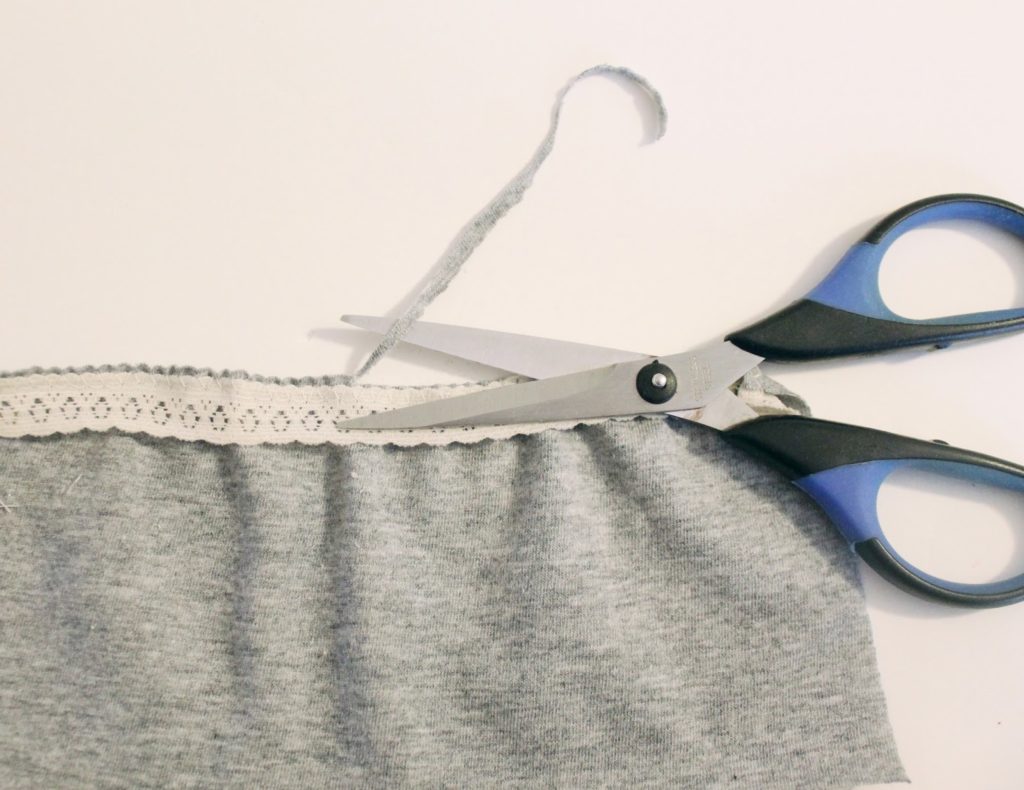 |
| Trim back excess- for zig-zag stitched finishes only. |
 |
| Lace applied with serger. |
 |
| Top stitching hem with a zig-zag stitch. |
4. Voila! Now you have a lace trimmed edge that is as neat on the inside as it is on the outside.
 |
| Inside view: Zig-zag & serged lace. |
 |
| The exterior finish. |
Method #2: Appliqued Scalloped lace.
1. In this method, place the lace directly on to the right side of your garment. The hem edge should run along (or slightly extend beyond) the straighter edge of the lace. Using a zig-zag stitch, stitch the lace along the scalloped edge directly onto the garment.
2. This is something I do for a little extra security: Stitch a second row of zig-zag stitches about 1/4″ down from the first row of stitches. This will ensure that your lace will not come loose from the garment.
 |
| Two rows of zig-zag stitches “just in case!” |
3. Looking at the wrong side of the garment, trim back your excess hem allowance.
 |
| Inside view |
4. That’s it! Applying scalloped lace takes a little more time, but is a beautiful way to finish a garment.
 |
| Exterior finish. |
 |
| For comparison… |
Lace edging is one of my personal favourite finishes. It’s pretty and comfortable. The one thing you will want to take note of when using lace is you likely will not want to throw the finished garment in the dryer. The heat from the dryer will quickly degrade the stretch lace. So, remember to hang to dry your lacy-dainties!
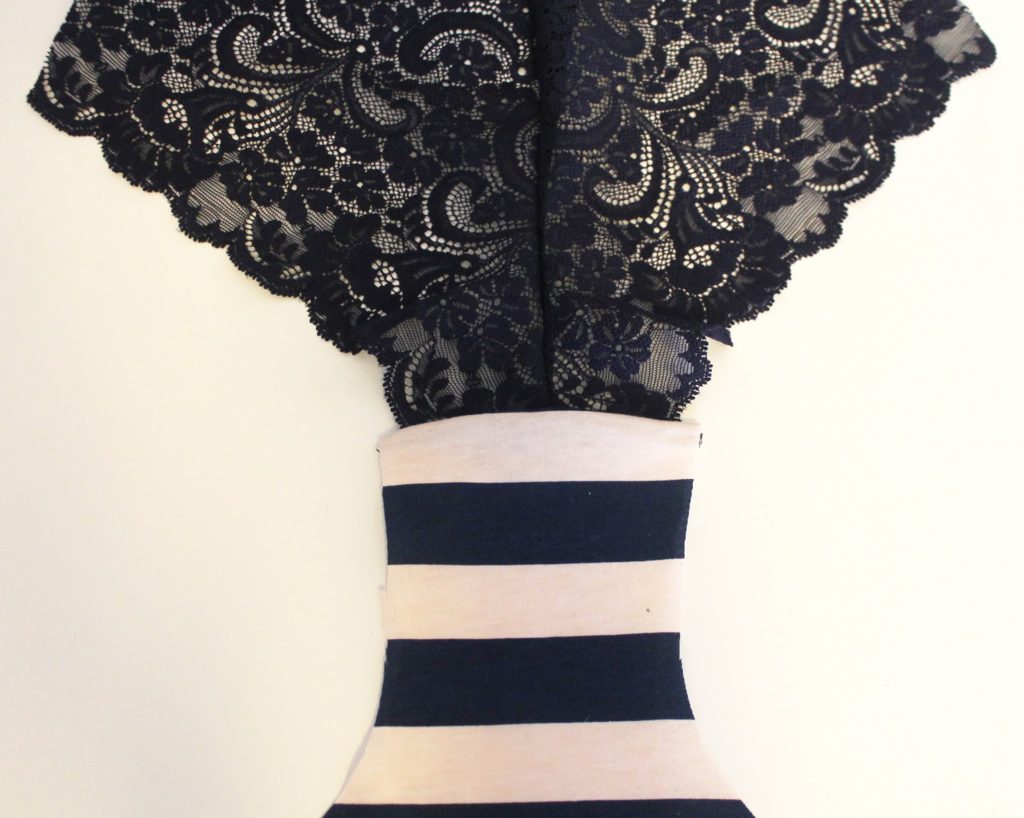 |
| Hem Allowance on Panties Front extends beyond the finished edge of the stretch lace. |
5. Using a serger or zig-zag stitch, finish the raw edges of the Panties front.
7. With a straight stitch, sew your side seams so that scalloped edge of lace meets up with the finished edge of the panties front. Be sure to backtack at the beginning and end of this seam.
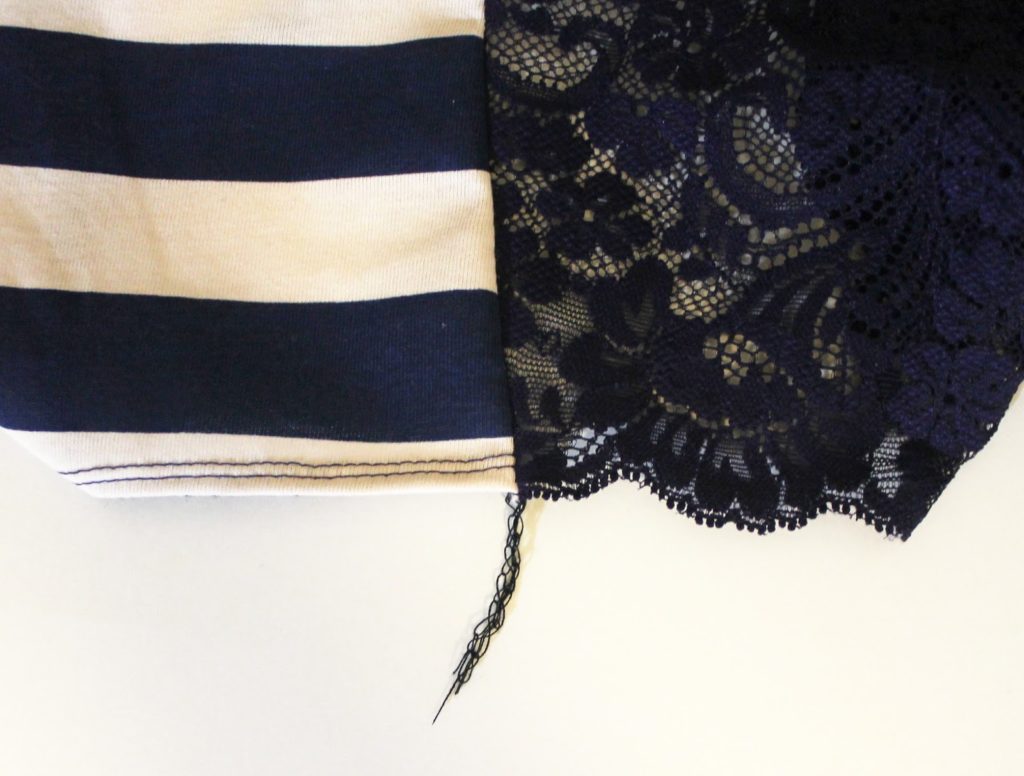 |
| Scalloped Edge of lace meets up evenly with twin-stitched hemline. |
8. Tie off any loose threads, and press the seam allowance towards the Center Front of the garment. Sew a small bartack along the hemline, anchoring the seam allowance in place. I do this because it is a potential weak point in the garment, where stitches may be prone to break. By tacking the seam allowance down, you will have a more secure join.
9. Finish with waistline elastic and embellishments as indicated in the pattern.
That’s it! It’s pretty easy to substitute with scalloped lace. I’ll leave you with a few pieces of inspiration…!






